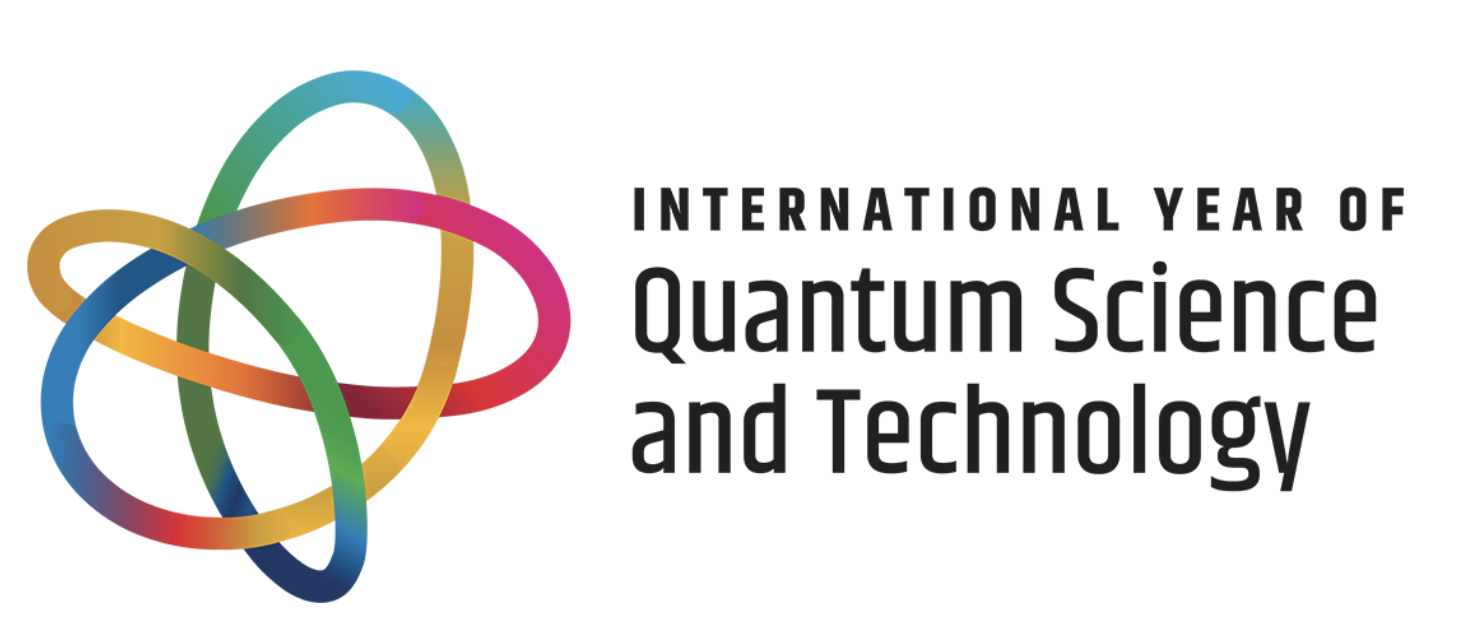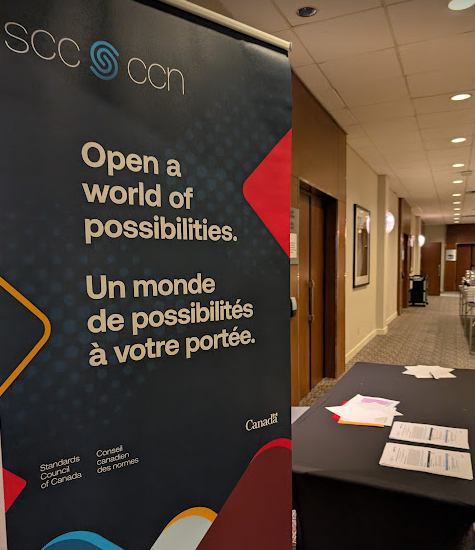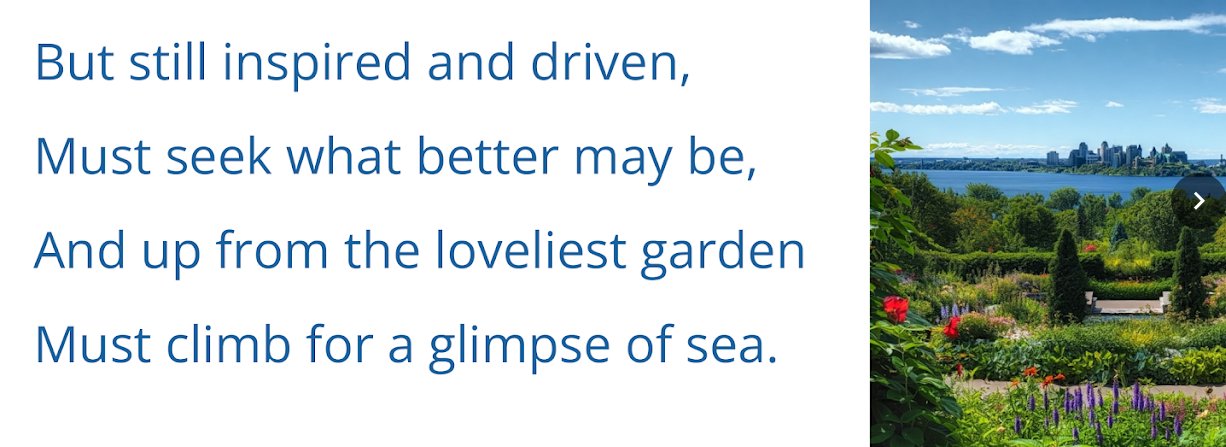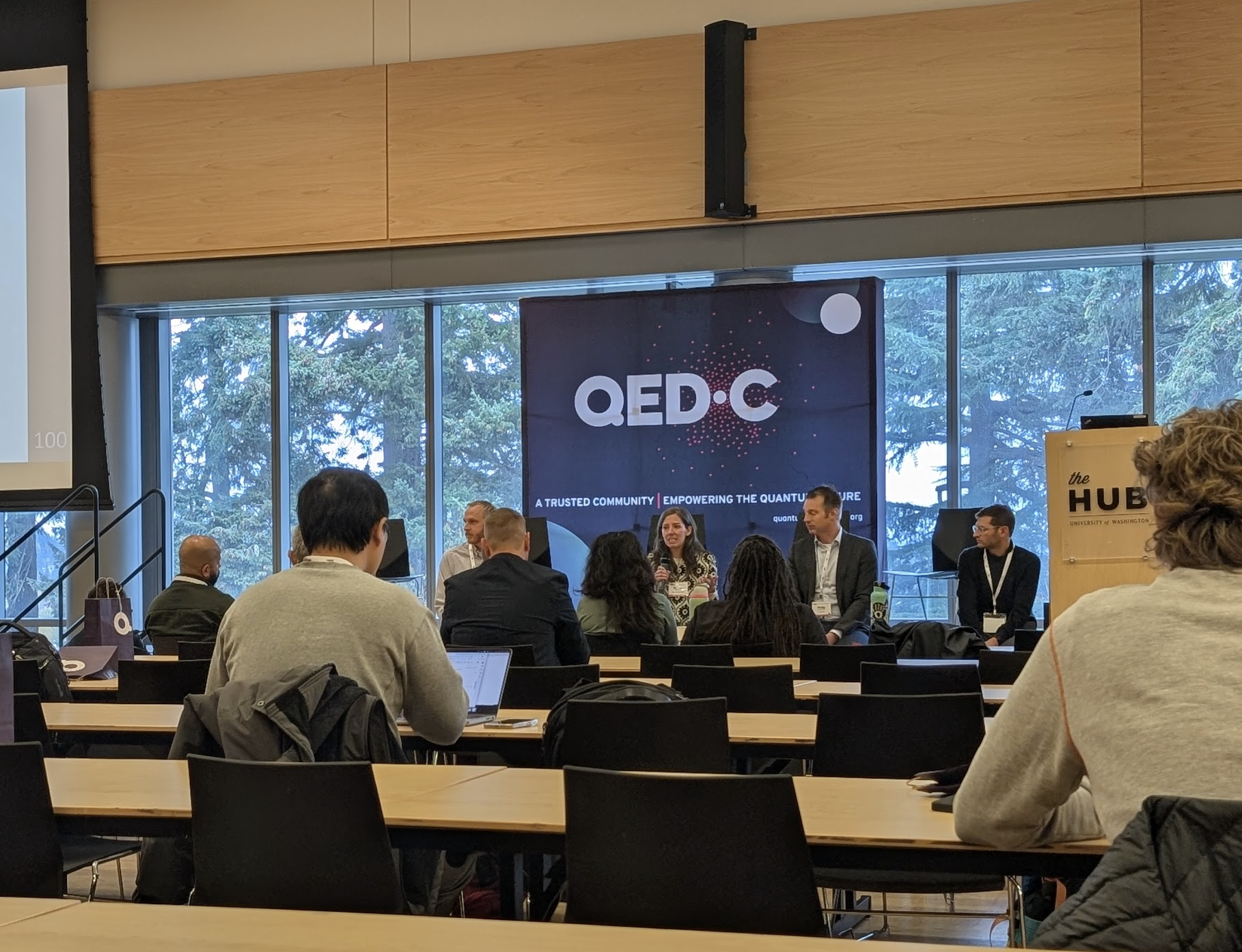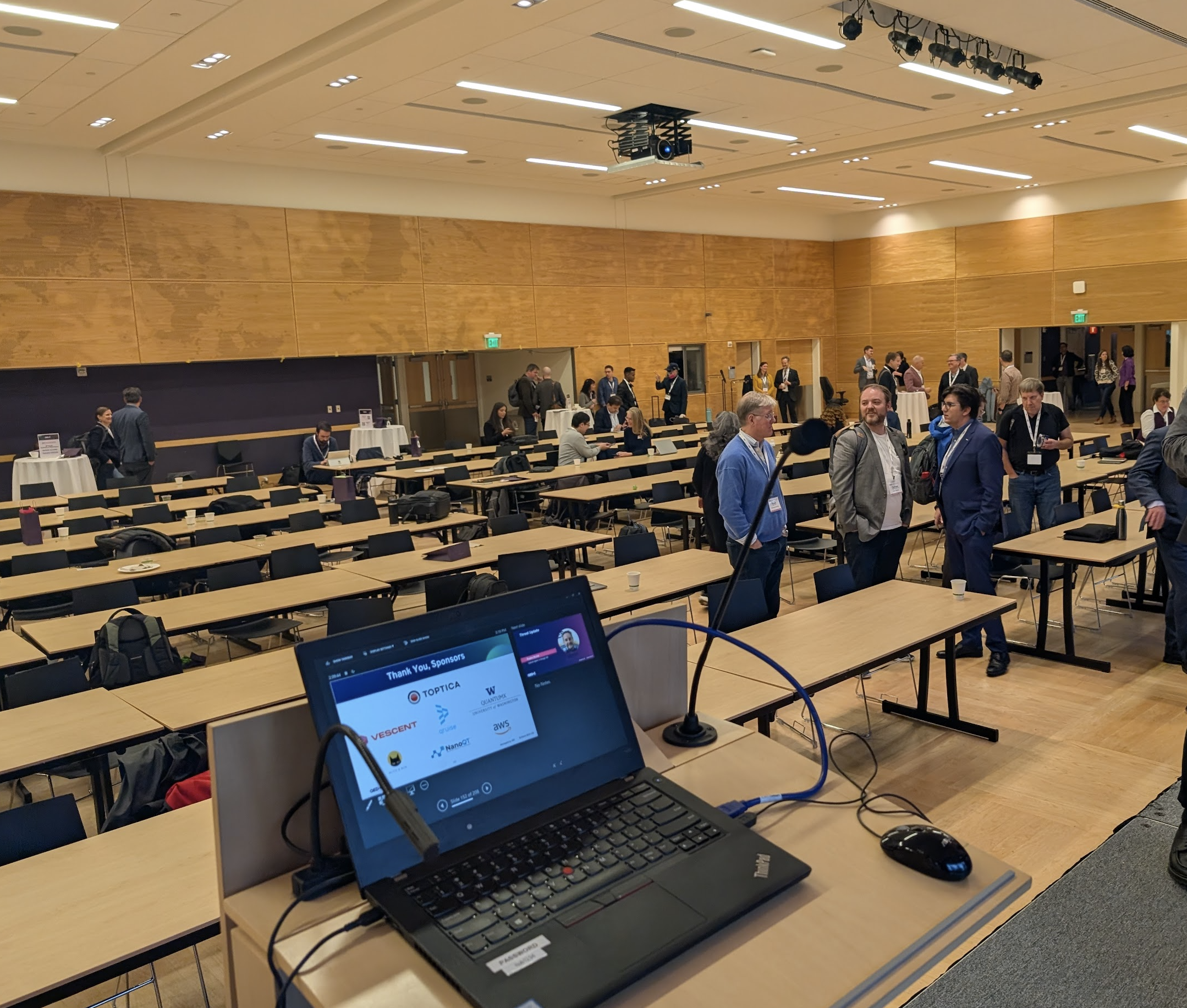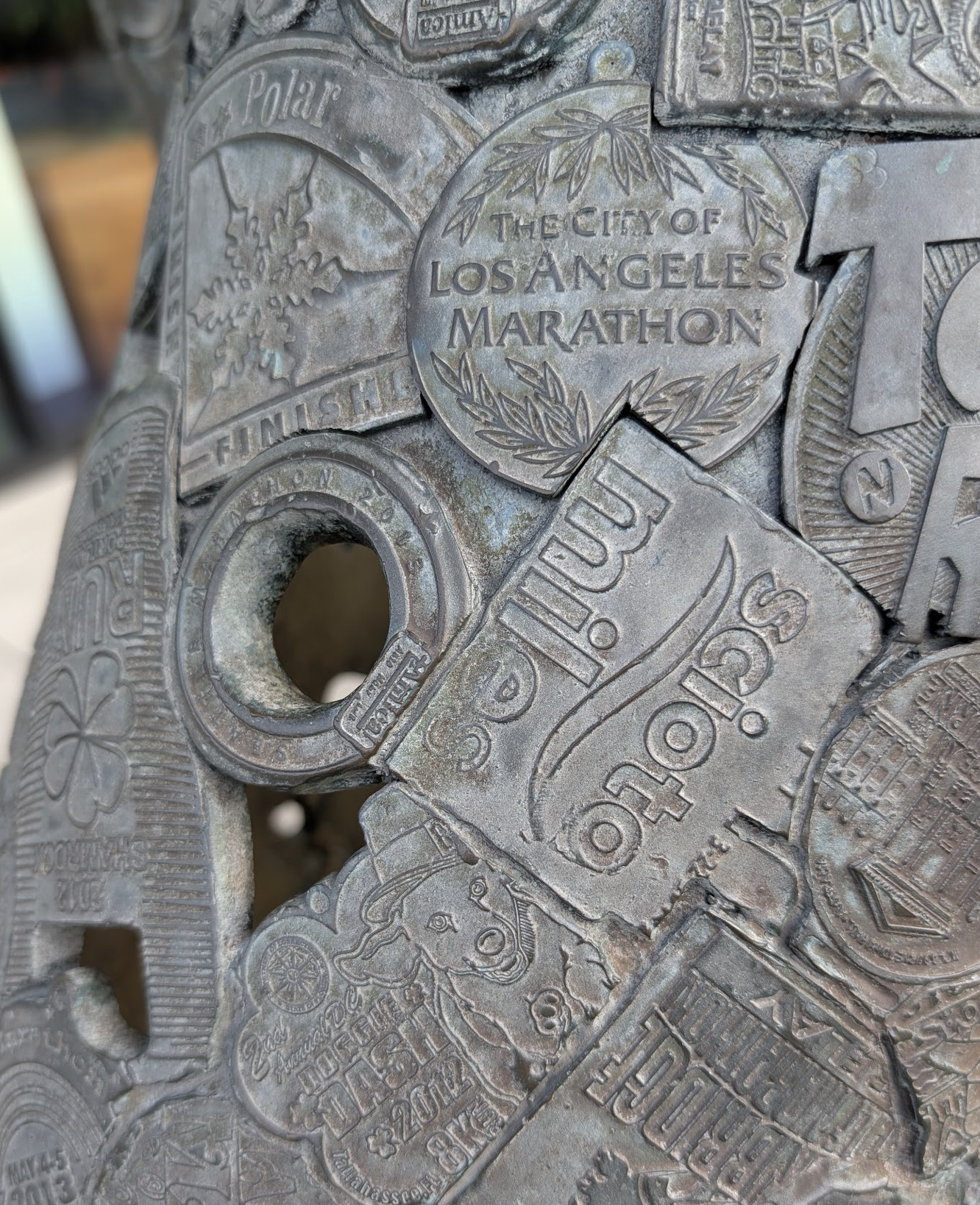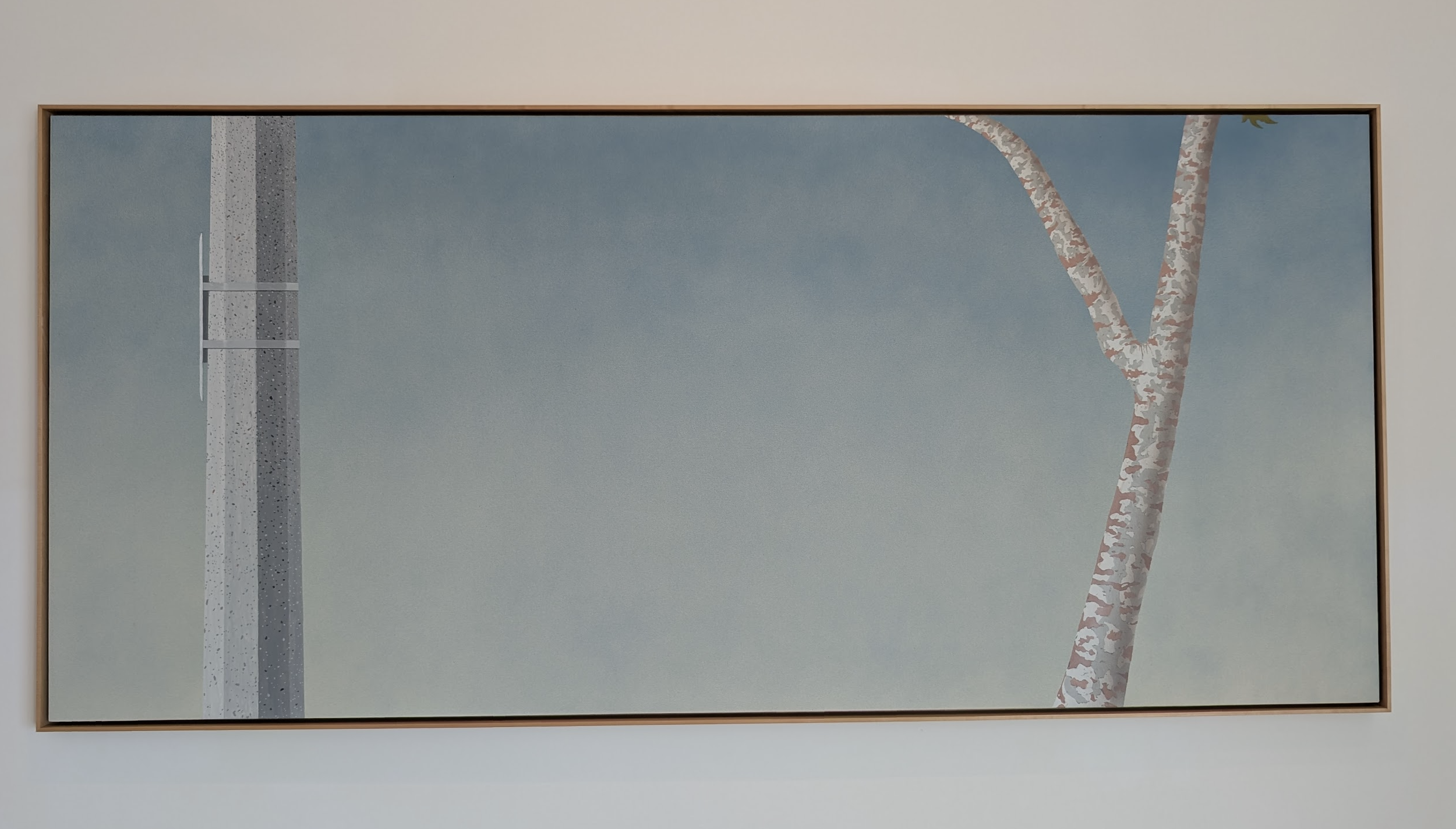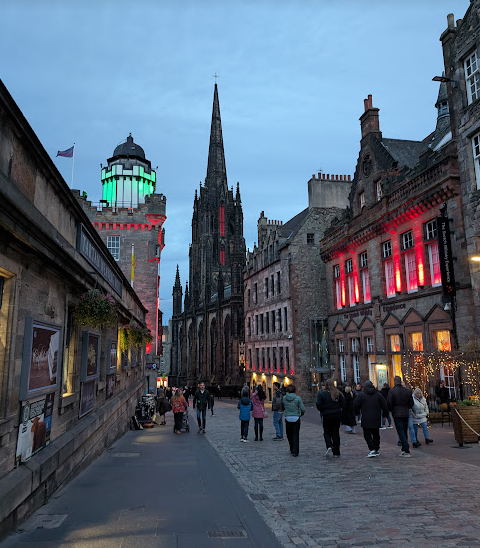ENDLESS QUANTUM SUMMER
It’s Quantum Summer. Let’s go.
Hi, I’m Austin. I work on improving cost and scalability in quantum manufacturing operations and the quantum supply chain, from R&D to commercial production.
📈 Scale Quantum, Not Bureaucracy
My interest is in removing supply chain pain points through standardizing quantum technologies that have the greatest near term economic impact to cost, capacity, and risk.
Promote economies of scale without blocking innovation.
I serve as Head of the United States Delegation to the ISO/IEC Joint Technical Committee 3 (“JTC 3”) on Quantum Technologies and chair the corresponding US National Technical Advisory Group (IEC/USNC TAG).
Convenor and Chair, Quantum Computing Hardware Supply Chain Standards for Hardware and Software (Working Group 11)
💡QED-C Standards & Metrics
2026 Incoming Chair of the Quantum Economic Development Consortium (QED-C) Standards & Performance Metrics Technical Advisory Committees (TAC)
🇬🇧 🇨🇦 🇺🇸 InterConsortia Collab
Within QED-C, I lead a cross-consortia standards discussion group with UK Quantum and Quantum Industry Canada
Together we are helping ensure the voice of industry is represented in standardization, from startups and national labs to established multinational companies.
🎓 I’m just a boy, standing in front of a stack of arXiv papers, asking myself to read them.
Chemical Engineering Progress (CEP) Cover Story - December 2025
⚛️ Solving chemical engineering problems with quantum computing
| December 2025 >
It is an incredible honor to be featured as the cover article in the December 2025 issue of Chemical Engineering Progress (CEP), the flagship publication for the American Institute of Chemical Engineers (AIChE).
🎹 💡 From a concert pianist turned Nobel physicist, to the origins of the pH scale from beer research, to applying quantum computation in molecular modeling, this piece introduces readers to the basics of quantum technologies through the lens of its use cases in chemical engineering.
🧑🏻🔬 My first ever issue of CEP arrived in my freshman year mailbox in the basement of my dorm at Johns Hopkins. I had joined AIChE as a student member and had just switched my major to chemical engineering.
🥪 I remember vividly sitting in the student snack bar upstairs, paging through the latest issue as I took large bites out of a chicken cheesesteak sandwich, wondering if I would ever be able to understand anything printed in its pages.
⚛️ It’s been a true full circle moment to now be highlighting a deep tech innovation in the pages of CEP and introducing the chemical engineering community to quantum computing.
I’m hoping that chemical engineers out there flipping through the physical pages of this issue will get excited about the impact of quantum technologies on our profession.
🍕🥗🥯 And for any anxious undergrads out there reading the issue on your phone or in a campus food court, know that if the going gets tough, stick it out, one fast food sandwich at a time.
That’s not only how most engineers endure the undergrad years—-perseverance is how quantum computing lasted for over two decades as a theoretical novelty, until one day it wasn’t. And it became real. ⚡️⚡️⚡️
🙏 I wanted to especially thank Emily Petruzzelli, Editor-in-Chief of CEP, for taking a chance on this story and being such a great partner and editor throughout the process. Thank you so much for helping bring this article to life.
AI generated rendition of the famous “Chicken Zinger” sandwich at a university snack bar which fed and fueled many a late night study session for college students in Baltimore.
2026 Incoming Chair of the Standards & Performance Metrics Technical Advisory Committee (TAC) at QED-C
| December 2025 >
Striking a pose with the QED-C Cross-TAC leads and exec team members in Seattle (Image source: QED-C website)
Just had a great, productive few days of calls and email exchanges with the leadership teams within QED-C and my fellow leaders of the Standards & Performance Metrics Technical Advisory Committee (TAC). Our annual plan for 2026 was just filed with the QED-C Steering Committee and I couldn’t me more excited to be sharing it with QED-C members in the new year.
I am so grateful at the literal vote of confidence from QED-C members as I step into the Chair role for the Standards TAC in 2026. I have had the privilege of following my predecessors Aharon Brodutch (IonQ) and Julian Martinez-Rincon (Brookhaven National Lab) and learning so much from the mindshare and best practices they have left me with as we head into the new year.
📈 Our theme in 2026 is: The Business Impact of Standards
🗺️ While today there are no formal quantum standards, understanding the business impact of those standards that are in development at the international level is a key driver in prioritizing which standards make it through the development pipeline first, supported by quantum experts from our international community of 40 countries in the IEC/ISO world.
⚙️ 💡 Having the voice of industry at the heart of those conversations is the critical driver of success for any subsequent standardization work and I am very enthusiastic about the possibilities ahead for us in 2026.
See you there. ⚛️
What we mean when we say impossible problems in classical vs. quantum computation
⚛️ Quantum computing, geological time scales, and what makes an unsolvable problem.
(The Shilla Hotel, Seoul, Korea)
| December 2025 >
🇺🇸 🇰🇷 Really enjoyed speaking virtually to the joint ANSI-KATS (Korea Agency for Technology and Standards) meeting, hosted in Seoul. I got to speak about the forthcoming work on quantum computing supply chain standards and the importance of keeping the business impact of standards as the north star of our work.
Speaking to an audience that also included experts in semiconductors and AI, I had a moment to explain what we mean when we say quantum computers can solve unsolvable problems.
🧮 Problems that rely on extremely complex strings of information, even when brute forced, are projected to take time that’s several orders of magnitude beyond a typical human lifespan.
🦕 So it’s not that classical computers can’t solve problems that quantum computers are well suited for—it’s just that we (and our current universe) won’t be around when the solution finally turns up.
🧬 And when we look for “practical” quantum computing problems—that is, problems that aren’t just complex benchmarks but point us to solving real world challenges, even the speedups can bring us closed to solutions that we would literally never reach—-when you can transform years into minutes, an entirely new problem space is opened up for you.
It was great seeing familiar faces from the Korean National Committee to JTC 3 in the audience and thanks again. to ANSI for the invitation to participate.
IEC/ISO Plenary Meeting - Fall 2025
⚛️ From structure to execution
(Copenhagen, Denmark)
| November 2025 >
The international gathering of IEC/ISO member countries on the Nordhavn waterfront in Copenhagen on a crisp, autumn afternoon. 🍁🍂
ANSI-European Standardization Organisations (ESO) Joint Meeting
⚛️ Quantum FTW: Collaborating globally to have impact locally
(Washington, DC)
| November 2025 >
🌐 ⚡️It was a pleasure to present alongside CEN/CENELEC and ETSI to share status updates on quantum technologies standardization efforts between Europe and the United States.
What our regions have in common, besides talented pools of quantum technology companies, are the continuing need to ensure that the quantum industry participates closely on standardization roadmaps, using the voice of quantum companies of all sizes and stages to help prioritize global standardization efforts.
Cost, capacity, and sourcing risks. Scale quantum, not bureaucracy.
Quantum Takes Manhattan 🌃🍎
🗽 QED-C Annual Meeting in NYC: critical technologies and cost efficiencies in the quantum computing supply chain
(New York, NY)
| November 2025 >
The last QED-C member meeting of 2025 took place in New York, hosted graciously by Google at their 9th Avenue offices in Chelsea.
Aside from gathering alongside friends and colleagues to close out the year, I had the chance to be a part of a few sessions:
Advanced Standardization for Critical and Emerging Technologies (ASCET)
IEC/ISO Joint Technical Committee 3 (JTC 3) in its Inaugural Year (2024 - 2025)
Quantum Computing Supply Chain Standards for Cost, Capacity and Risk, part of this year’s QED-C Quantum End User Executive Forum.
// ASCET
Thanks to ACSET Director James H. Dickerson, PhD, and team leads Sara Bloomquist, and Ross Brindle (CEO of Nexight), for their invitation for introducing ASCET to the QED-C Standards & Performance Metrics Technical Advisory Committee.
ASCET, launched earlier this year with $15M funding from NIST and led by ASTM International. Its focus is on four critical and emerging technologies:
(1) ⚛️ quantum technologies
(2) 🍪 semiconductors
(3) 🤖 artificial intelligence
(4) 🧬 biotech
to share best practices and build our industry’s strength across the applications areas of these disciplines.
James H. Dickerson, PhD, MBA, Director of ASCET, and Ross Brindle lead our team through an exercise on connecting standardization with business needs.
// The Business Impact of Standards 💵
And to both celebrate the one year anniversary of JTC 3 and show a path to our key work ahead, we shared with business executives the role of standards in the cost efficiency of quantum computing supply chains.
💼 With such nascent technologies, typical standards, even far down the bill of materials, sound like they should exist, but they don’t.
📈 Our aim with this work, paired with the efforts of JTC 3’s newly formed Working Group 11 - Quantum Computing Supply Chain, is meant to tackle the challenges to cost, capacity, and sourcing risk so the industry can more effectively scale.
Quantum Computing & Chemical Engineering: Year 2
🔥 From learning basic theory to programming a quantum computer in four hours
(Boston, MA)
| November 2025 >
My co-chair David Bernal Neira & I had a great time returning to AIChE’s 2025 Annual Meeting in Boston. We ushered in quantum computing’s second year of having a dedicated inter-disciplinary session at AIChE’s flagship conference of the year, this time adding in a four hour hands on workshop to introduce chemical engineers to the science fiction like world of quantum computing. Within four hours, our class of chemical engineering professionals went from quantum mechanics theory to building a real time optimization program and watching come to life on a D-WAVE computer.
The 2025 Introduction to Quantum Computing for Chemical Engineers workshop. From theory to programming a real life quantum computer in four hours, thanks to D-WAVE’s generous support for student access to its Leap Quantum Voyager platform.
⚗️ Thanks to the support of AIChE’s Chemical Engineering Technology Operating Council and its constituent Divisions and Forums, we were able to present Quantum Computing Applications in Chemical Engineering: Beginnings and Futures.
⚛️ 🚚 Whereas our four hour workshop was a deep dive into the technical aspects of quantum mechanics, this session, graciously hosted jointly by the AIChE Management and Process Development Divisions, summarized the state of the art of quantum in chemical engineering today, and the business landscape that’s helping bring quantum computing from theory to commercial scale.
🐟 🦆 ⛵️ David, myself, and our co-chair Soheil Seyed Mansouri are looking forward to 2026, where we’ll be bringing chemical engineering back to AIChE as a full fledged conference-within-a-conference at the Annual Meeting next year in Minneapolis. We hope to see you again then!
Quantum Computing Supply Chain Working Group
| November 2025 >
It is a huge honor to announce that I have been elected internationally by IEC/ISO JTC 3 experts to serve as Convener and Chair of the newly formed Quantum Computing Supply Chain Working Group, or WG 11.
🇺🇸 I would not have been possible without the support of the United States National Committee Technical Advisory Group, where my role as Chair remains unchanged.
As an industry we are still far from actual supply chain standards.
Industry Led, Industry Voiced
🚚✈️ 🚢 The first steps in that direction can't occur without in-depth dialogue with the quantum firms represented by JTC 3's 40 member countries.
And it will be through these conversations that we will be gathering real industry pain points and best practices, unbiased towards any one modality or technology.
This is truly an honor and I look forward to engaging with the quantum community and our constituent companies and consortia in this new capacity.
Quantum Computing by the Beach
🏞️ 🏄 Quantum and Professional Engineering, from literally climbing bridges to supply chains at sunset.
National Society of Professional Engineers (NSPE) - PE Magazine Article
| October 2025 >
Hello from the Shellback Tavern in Manhattan Beach, California, which makes an appearance in my article introducing quantum computing to the Professional Engineering in the 2025 Issue 2 of PE Magazine from the National Society of Professional Engineers (NSPE).
🐚 Several years ago I was in the greater Los Angeles area trying find an emergency industrial cable supplier for a datacenter project and the Shellback became my office-away-from-office for a few very long days and nights.
🚚 As challenging as it was, it was still a problem that could be tackled because of the presence of well known cabling standards.
Quantum technologies today, do not have that benefit (yet), yet standards will be a key mechanism for us to get closer to that reality.
🏗️ Enabling quantum technologies will help supercharge the expertise that the best of our professional engineers, especially our colleagues in civil, structural, and mechanical engineering are already tackling today.
🌉From the insides of bridges in Idaho, to finding inspiration for quantum mechanics among the sculptures of American sculptor Alexander Calder, we get to start connecting quantum technologies to professional engineering.
🙏 Special thanks to NSPE and the Emerging Technologies Committee for the support in bringing this article to the pages of PE Magazine.
A Chemical Engineer’s Field Guide to Quantum Computing
American Institute of Chemical Engineers (AIChE) Process Development Division (PDD)
| October 2025 >
And we’re off! The first in a series of cross-AIChE outreach sessions to bring chemical engineering experts from across the Institute’s knowledge domains into the application side of quantum computing.
Thanks so much to the AIChE Process Development Division for hosting me and my colleague Dr. David Bernal Neira from Purdue University to provide an overview of quantum computing, how things are going in the early stages of its development, and the applications to chemical engineering.
Asia Pacific Economic Cooperation (APEC) - Hybrid Workshop on Strengthening Collaboration on Standardization for Quantum Technologies
(Seoul, Korea)
| July 2025 >
Thanks to Standards Australia for inviting me to virtually speak at the 2025 APEC Workshop on Strengthening Collaboration on Standardization for Quantum Technologies in Korea.
I got to share some early work happening in IEC/ISO JTC 3 on the economic impact of standards on the quantum computing hardware supply chain. Maintaining industry-led discussions in this early stage of the technology is a critical part of producing standards that are useful and economically impactful, rather than just adding bureaucracy.
Our key points:
⚛ Industry Value Drives Standards Adoption
⚛ Standards Adoption Drives Scale
~70% of surveyed APEC respondents cited cost and technical complexity as the top barrier to scaling quantum technologies. With an entire infrastructure being developed behind the scenes and below the surface, lowering supply chain costs are table stakes for quantum to feasibly scale.
With some best practices in the APEC region and its partners, standards will be one mechanism for us to improve costs so that both new and established companies can effectively participate in the quantum industry.
“A city moves by underneath,” is a line from Sydney-based poet Peter Boyle that summons the shifting technological landscape that quantum technologies is helping to create. Economics-driven standardization will be a key element in stabilizing this new infrastructure of growth and discovery.
A virtual thumbs up with Alistair and my gracious hosts in Korea.
The landscape is being set, let’s build it together.
Inaugural Forum of the Quantum Datacenter Alliance
(London, UK)
| June 2025 >
A three and a half hour train ride from central London, the Tate Museum's St. Ives outpost is like a contemporary Greek temple, overlooking the beach on the Cornwall coast.
In 2025 the Tate St. Ives was also home to Lilian Lijn: Arise Alive, a retrospective of London-based American artist Liliane Lijn whose futuristic sculptures and installations of lasers and fiber optic cables are part of her process in “visualizing the invisible.”
In the early 1960s, Lijn’s sculptures placed her at the forefront of artists exploring new ways of using technology to, as Lijn states, "see the world in terms of light and energy” — a world view not too different from quantum physicists.
But quantum’s connection to society isn’t just through contemporary art. Three hundred miles away, quantum also takes us to 1970s rock bands and an iconic power station on the banks of the Thames River.
And that’s part of how I ended up in London this June for the inaugural forum of the Quantum Datacenter Alliance, founded by Nu Quantum and their organizational partners.
Thanks to Nu Quantum and QDA for an amazing day, gathered inside a historic power plant. (Photo Credit: Nu Quantum)
The album cover to Pink Floyd’s 1977 album, Animals.
The Battersea Power Station is still standing strong in 2025, just surrounded by a few more apartments, cafes, and beer halls, like the excellent Battersea Brewery.
A lot has changed in this corner of London since the Battersea Power Station appeared on the cover of the Pink Floyd album, Animals. But the power plant, which supplied electricity to London from 1930 to 1980, was a symbolic place to launch the Quantum Data Center forum, where a mix of technologists, researchers, innovators, and quantum companies met to map out the future of quantum infrastructure.
I was invited to moderate a panel on the hardware, supply chain, and manufacturing layers of an eventual quantum data center, from quantum processors to basic infrastructure. My guests were:
Alexander Keesling, Chief Technology Officer at QuEra
Owen Arnold, VP Product Development at OQC
Josh Savory, Director of Offering Management at Quantinuum
Stephan Schaecher, Senior Principal Engineer Trapped Ion QC at Infineon
We came together to discuss building robust quantum processors (QPUs) at scale, the supply chain and technical challenges to go from QPU to and high performance computing (HPC) to quantum data centers, and the role that standards might play in their interoperability and deployment.
// Key Takeaways
Get the basics right - Build in quality and robustness from the start before scaling up.
Early Starts on Supplier Collaborations - From contract manufacturing to supply chain partnerships, start early and collaborate broadly to grow the quantum economy together.
Unlock Economic Advantage in the Quantum Supply Chain - Design standards that can positively impact the feasibility and cost efficiency of scaling up.
Interoperability with Classical Computing and Across Modalities - Collaborate on interoperability between different processor types and and quantum-HPC hybrid models. Hybrid solutions are practical platform to transition into quantum computing and quantum networking.
Realistic Public Messaging to Educate, not Hype: Create accessible public messaging about quantum computing, focusing on its long-term promise and early use cases in scientific discovery.
Pink Floyd left the quantum community with some good advice as we headed into the early phases of quantum data center discussions:
You know that I care
What happens to you
And I know that you care
For me too-Pink Floyd, “Pigs on the Wing Part 2” from the album, Animals (1977, Harvest/Columbia Records)
The light and the energy are waiting for us.
Nu Quantum CEO Carmen Palacios-Berraquero kicks off the session for all of us.
Listening to Owen Arnold of Oxford Quantum Circuits share his thoughts in scaling, standards, and interoperability.
Special thanks to Dr. Maria Violaris, also a moderator at QDA, for this action shot. You can check out her YouTube program, The Quantum Channel for her accessible insights on all things quantum mechanics and quantum computing. ⚛️
Conversation was getting good. (From L to R): Alexander Keesling, CTO - QuEra; Owen Arnold, VP Product at Oxford Quantum Circuits; Joshua Savory, Director of Offering - Quantinuum; Stephan Schaecher Sr. Principal, Trapped Ions - Infineon. (Photo: NuQuantum)
Astonished at the chance to literally sit next to Hermann Hauser and hear about his journey. He co-founded a little semiconductor company called Acorn and launched its seminal product, Acorn RISC Machine, which would eventually become the name of the company: ARM (!)
Quantum Bavaria
World of Quantum Trade Show (Munich, Germany)
| June 2025 >
In 1927 German artist Paul Klee painted “The Limits of Reason”, portraying a dark moon-like circle delicately balanced on a wireframe scaffold. As an artist who was also deeply interested in the nuances of color theory, Klee’s painting could be representative of where the quantum industry is today—pushing those limits through science and engineering.
And it was very much in the vein of demonstration, collaboration, and discussion that the 2025 World of Quantum Munich trade show took place again.
Touted as the world’s largest trade show dedicated to quantum technologies, a common theme was making quantum easy to access, demonstrating what is possible now, and inspiring the audience with what its future potential holds.
Trade exhibitions can often feel like rooms and rooms full of people selling widgets, but the World of Quantum hit different. I likened it to more of a world expo where hands-on demonstrations were everywhere to educate and inform. Engagement and outreach are critical to both private and public adoption of quantum technologies, making the unreal as real and as tangible as possible.
And browsing the aisles with coffee in hand (shout out to QED-C for sponsoring the coffee and gelato carts in the exhibition!) was very much that: a walking tour of the future as told by the people building it.
A postcard of Paul Klee’s “The Limits of Reason”, part of the permanent collection of Munich’s Pinakothek der Moderne. Apropos for quantum technology’s presence in the real world.
An engaging panel on the geopolitics of quantum technologies.
Quantum is no longer the stuff of academic papers. Plenty of exhibits showed hands on applications of what quantum is (and is not yet) capable of today.
I am (luckily) here.
Visiting the booth of the home team.
Munich Quantum Valley and its span of innovative companies.
Running into my colleague Oliver from the German delegation of IEC/ISO JTC 3. Just a few weeks prior, we were both in Tokyo for the JTC 3 Plenary meeting, discussing the magic of wormholes inside passenger elevators.
Shout out to the Neqxt team who put up with me talking way too much about the value of quantum standards even while taking the time to show me demos of their ion traps and gifting me cool swag.
Walking through Munich with another JTC 3 colleague from the German delegation, Thomas, who graciously and selflessly toured me around Munich in the summer sunshine, literally walking several miles. And check out the street sign! It’s wonderful to live in a time where quantum events make it onto the everyday lampposts around town.
Thank you, Munich convention centers.
Touring the grounds of the thorough collections of the Deutches Museum, one of the largest (if not the largest) technology museums in the world. As a special treat—their special exhibit: Light and Matter and the early days of quantum mechanics!
Maxwell. That is all.
Photonics in popular culture. Thinking of petitioning The Living Laser to appear in the next Avengers movie.
Be still my chemical engineer’s heart: a recreation of a literal old school chemistry lab.
Adding to my Amazon wishlist.
When in Munich: weißbrat, Bavarian pretzel and sweet mustard (I opted for a cappuccino at 8 am instead of the traditional weißbier, but hey, to each their own 🍻)
Probably the Best Quantum Computing Conference Focused on Chemical Engineering
(Copenhagen, Denmark)
| June 2025 >
Will quantum computing have a breakthrough impact in the chemical sciences? Probably.
That is the same response when Denmark’s Carlsberg brewery ponders if they are the best beer in the world. Probably.
This year marked the fourth iteration of an AIChE co-sponsored quantum computing and AI workshop hosted at the Technical University of Denmark (DTU), founded by chemical engineering professor Seyed Mansouri. For its 2025 edition, we rebranded it: QChemE - Quantum Computing Applications in Chemical and Biochemical Engineering and I had the privilege of co-chairing it alongside Seyed and other long time co-lead of the conference, David Esteban Bernal Neira.
For three days in on DTU’s campus in Lyngby, 20 kilometers outside of Copenhagen, we had the opportunity to host startup leaders, venture capital firms, intellectual property practitioners, and academia for discussions linking quantum computing to applications in the chemical sciences, current barriers, potential enablers, and how to join these two areas as quantum technologies continue to evolve.
Some possible hints on the future of quantum? Let’s turn to beer.
// We have beer to thank for the standard pH scale
In 1825, upon inheriting his father’s brewery in Copenhagen, J.C. Jacobsen tried his hand at a new formulation of beer. When demand outpaced his available capacity, he founded a new brewery on the city outskirts in 1847 and named it after his then five year old son, Carl Jacobsen.
In a time where the quality of beer and its safety to consume varied wildly, eventually both father and son turned to science to complement their craft. Years of studying and traveling around Europe had shown them the methods of brewing consistent, high quality beer, but beyond the how, they were also interested in the why. So they turned to the rigors of scientific research to ensure their quality beer could be delivered reliably and repeatably at scale (as of 2024, Carlsberg brews over 86 million barrels a year.)
Among their gifts to back to science, was the pH scale (yes really!), which was devised and then open sourced to the scientific community in 1909 from the Carlsberg Research Laboratory.
Carlsberg’s motto to this day: “Probably the best beer in the world.”
Stay humble. Stay proud. 💪
// Matching Quantum Potential to Scientific Benefit
Our technical program for QChemE was an interactive mix of panel discussions as well as technical deep dive presentations into current chemical and biosciences research where quantum computing can be a promising application.
We were incredible fortunate to have the leads from both Novo Holdings and the Novo Nordisk Foundation as our keynote speakers, painting a picture of both quantum’s future in this space as well as highlighting Denmark’s strength as an incubating landscape for quantum technology research.
We rounded out the program with discussions on:
📜 role of standards and standardization in helping quantum scale in these domains, thanks to the participation of the Danish National Committee of IEC/ISO quantum technology standards as well as Danish Standards
👩⚖️ an engaging discussion on the role of IP law in guiding quantum strategy with members from the quantum division of Mewburn Ellis
💼 career origin stories of how ODE founder Keeper Sharkey and IBM research scientist Alberto Baiardi got their professional starts in quantum.
““In working the brewery it should be a constant purpose, regardless of immediate gain, to develop the art of making beer to the greatest possible degree of perfection so that this brewery as well as its products may ever stand out as a model and, through their example, assist in keeping beer brewing in this country at a high and honourable level.””
These themes: dedication, purpose, honorable, perfection are referred to as the “Golden Words” of J.C. Jacobsen. They form a principle that combined with Carl Jacobsen’s equal passion for brewing and the fine arts, saw the Carlsberg legacy span art, science and societal advancements. Something inspiring for us to think about in quantum technologies.
While quantum computing is still in its nascent stages, solving the right problems in the chemical engineering space is an exciting opportunity area to pursue, something that alongside AIChE, we hope to continue promoting, matching engineers to this new technology.
Erik Stangerup, CEO of QunaSys Europe gives our opening keynote address
Jeroen Bakker, Partner at Novo Holdings, walks us through current areas of pursuit at the intersection of quantum and the health sciences.
Morten Bache, Director of Scientific Research at Novo Nordisk Foundation tell us about possible future areas of investigation between quantum computing and biochemical engineering.
William Clements, Head of Software and Applications at ORCA Computing, talks about the interface of high performance computing / classical supercomputing (HPC) and quantum computing.
My fireside chat with David Balslav-Harder of the Danish Metrology Institute (and my colleague in JTC 3) on the role of standards in quantum computing. (Thanks to Dr. Keeper Sharkey for the photo!)
Post panel chats after our closing session with Morten Bache from Novo Nordisk Foundation, Anders G. Frøseth at Propagator Ventures, and Jonny Olson from law firm Young Basile.
A smaller version of the famous Little Mermaid statue in Copenhagen, also commissioned by the Jacobsen family.
Carl and Ottilia Jacobsen were also avid art collectors, their international travels to search for the best practices of beer making coinciding with their experiences in the fine arts world. Their private collection would go on to seed the New Carlsberg Glyptotek Museum in 1888.
One of my favorite paintings at the Glyptotek Museum: “The Committee of the French Art Exhibition in Copenhagen 1888” by P.S. Krøyer. The Committee was formed of Carl Jacobsen and influential Danish and European artists and scientists, including French chemist Louis Pasteur, all whose names are inscribed at the base of the frame. Seeking advancement and innovation across the boundaries of art, industry, science, and society was a theme of Jacobsen’s and an inspiring point of view to take for quantum technologies.
Gorgeous interior section of the Glyptotek Museum.
It all starts with an idea and a printout. And some Scotch tape.
Celebratory reception with the attendees and speakers at the restaurant, Madklubben Lyngby
Obligatory photo of the waterway by the Nyhavn canal.
Closing out a successful week in full Denmark mode with a bit of aquavit.
Quantum Technologies Standards (JTC 3) May 2025 Plenary
(Tokyo, Japan)
| May 2025 >
An amazing opportunity to meet again with the JTC 3 leads, now twenty eight countries strong. We are gelling together so well as a global team and I couldn’t be more proud and privileged to be apart of it all.
But first, ice cream.
In 1951, Japan Air Lines started its domestic flight service in Japan and needed a supplier to provide meals for its passengers. An up and coming entrepreneur named Kyoichi Egashira founded his catering service in a small building in Fukuoka, on Japan’s Kyushu island.
As his business grew, Egashira had to decide where in the supply chain he wanted to compete: raw materials and ingredients, stay in the prepared meals lane, or grow into a full service hospitality business: supplier or buyer or both.
So his company started to expand, first to a bakery and confectionary, then to an ice cream factory. In 1953, he went to the customer facing side of the hospitality business directly by opening Royal Hananoki restaurant in Fukuoka, specializing in western style food. This restaurant, which was known to have hosted Marilyn Monroe and husband American baseball star Joe DiMaggio, would become the predecessor to the modern day restaurant chain: Royal Host.
An early Royal Host restaurant
(Source: Royal Holdings Co, Ltd.)
As of 2025 the publicly traded Royal Holdings Group has a market cap of ~$800M (USD) and more than 560 restaurants across 8 different brands, including a hotel chain. One of those brands is the original Royal Host, a constant fixture for western style food (and did I mention ice cream) across Japan. Other brands include Sizzler (yes, that one!) and Standard Coffee (how fortuitous a name).
After being in Tokyo for four days I had already eaten ice cream ice cream sundaes at Royal Host twice.
Thankfully, the quantum industry shows more restraint than I do when it comes to ice cream.
I came here to take notes and eat ice cream. And I’m all out of notes.
So what does this have to do with the quantum industry? Cost.
The food service industry and its tight margins is fiercely competitive. Aside from scale and revenues, the other path to profits is diligent cost management.
In quantum technologies, one source of high costs are a constant challenge because of the bespoke nature of its hardware components. So the story of Royal Holdings Co, Ltd isn’t just about their ~ $1 billion (USD) in net sales in 2024, but how they scaled costs to support growth.
Finishing off my hot fudge sundae at a Shinjuku-neighborhood Royal Host in a cylindrical building the same shape as a dilution refrigerator, that's where my headspace was:
🍨 What conversations around costs could we hold within the quantum standards community to address our hardware?
🍨 And how could standards be involved when the technology itself was still so nascent and continually evolving?
Loved hearing from a US National Committee member that she had convinced JTC 3 delegates from Denmark and the United Kingdom to join her for ice cream after hearing my Royal Host inspired quantum supply chain talk during our technical symposium in Tokyo.
// Tokyo Bay, the home to Disneyland...and quantum standards meetings
The IEC/ISO Joint Technical Committee - Quantum Technologies (JTC 3) was hosted in Tokyo this May at the AIST Waterfront campus for a week of meetings, decisions, and working sessions for its twenty eight member countries. This May also marked JTC 3’s first birthday as an entity, in the same year that quantum mechanics celebrated its 100th. 🎂
It was difficult to not be inspired each morning as the Yurikamome elevated train rounded its high tracks over Tokyo Bay, traversing Odaiba Island (I think I can, I think I can, I think I can)🚂.
Cargo ships floating towards building-sized cranes, cruise ships loading with luggage and outbound tourists, the malls-within-a-mall structures of Aqua City and Diver City opening their gates to food, shopping, and quantum possibilities.
With part of the United States Technical Advisory Group Delegation to the May 2025 plenary of the IEC/ISO Joint Technical Committee - Quantum Technologies (JTC 3). I am so proud of this away team, who navigated so many international collaborations over the past year as part of JTC 3’s progress.
For the last year, JTC 3 has been steadily growing as the world's smallest Venn diagram between very new quantum technologies and very old international standards bodies.
The past year has been about foundations: structuring JTC 3 to operate according to the IEC Directives. Now that some basic infra is in place, the multiple ad hoc groups covering everything from quantum computing, sensing and communications to quantum random number generation and photon sources and vocabularies, have been hard at work to start the discussions that will one day lead to actual quantum standards.
Just by waking around the room and speaking to my international colleagues I could tell that the community was gelling much better than ever before.
The US Delegation was solid and better coordinated than we have been in our last two runs and as an overall community, the neural pathways of idea exchange continuing to reinforce themselves with honest but collaborative and constructive critique.
Hellos and goodbyes with some members of the JT 3 Japanese Delegation.
Walking out of the last day of plenary with the team, it was a great feeling to sense what was ahead.
Heading up the escalator to Telecom Center Station to catch the evening train, scanning the Metro card through the turnstile one last time, we were quantum technology professionals surrounded by shoppers, families headed to dinner, Disneyland goers tired from a day of park hopping.
]And together we went on and on. 🚇
Rainbow Bridge on the way home from an inspiring week of quantum technologies work in Odaiba.
Standard spotting around Tokyo.
// Observables
The Beginning of the Beginning 🇯🇵
IEC/ISO JTC 3 at the grand opening of Japan’s Global Research and Development Center for Business by Quantum-AI technology (G-QuAT)
(Tsukuba, Ibaraki Prefecture, Japan)
| May 2025 >
The twenty eight voting members of IEC/ISO JTC 3 Quantum Technologies were invited by Japan's National Institute of Advanced Industrial Science and Technology (AIST) to visit their brand new quantum focused facility in Tsukuba, about an hour and a half outside of Tokyo.
We arrived for the site tour just days after Japanese Prime Minister Shigeru Ishiba had visited the site for the ribbon cutting ceremony.
No photos were allowed during the tour, but the bright white celebration orchids were still fresh in the front atrium and the building still had that new lab smell.
The site, which is funded both from private and federal sources, was purpose built for collaboration, to assist both upcoming Japanese quantum startups as well as open its doors to international collaborators.
Researchers, established institutions and founders alike can work side by side, with access to workstations linked to dedicated dilution refrigerators and foundry spaces.
🖥️ Taking a multi-modality approach to quantum computing development, G-QuAT offers access to dilution refrigerators, a new QuEra neutral atom machine, and coming soon, a photonic based quantum computer. Their mid term vision is to leverage the possibilities of quantum through hybrid work with their onsite supercomputer.
💹 To grow the industry that is in its nascent stages, helping companies overcome the initial capex of entering quantum technologies will be critical to allow innovation to grow at the speed of ideation.
📈 In the standards world, we're doing our part to help ensure these early, bespoke hardware stages are as cost efficient as possible, removing as many cost barriers as possible, between quantum breakthroughs and the infrastructure they will be discovered on.
Who wants to be a Mazerunner
Google I/O 2025
(Mountain View, CA)
| May 2025 >
So proud that Google Quantum AI has its own little section at Google I/O this year.
Hello from Google I/O 2025 where Google Quantum AI has its own footprint alongside the sea of exciting new offerings from Cloud, and Google's jaw-dropping AI Sandbox area where you can experiment with everything to virtually trying on clothes to robot arms, how search is being reinvented one token at a time.
The Google Quantum AI Mazerunner is classic arcade cabinet style video game where you can take on a quantum computer by speed running a maze, collecting quantum themed treasures along the way.
The maze is one of my favorite ways of explaining how quantum computing is different from classical computing.
In a classical computer, which computers only via 1s and 0s, a maze would be solved by trying every possible route sequentially. After some time, the right path is found and the answer is revealed to you. Classical computers process their bits sequentially, albeit, near lightning fast, but it is this one-at-a-time approach that ultimately solves the maze.
A quantum computer, however, allowed to leverage the strange properties of quantum mechanics such as superposition, do not have to only use 1s and 0s. They can hold 1 + 0 states at the same time.
So to navigate the same maze, the quantum computer “sees” all possible paths through the maze at once.
Now here’s the part where there’s a critical nuance.
The quantum computer does * not * calculate all paths simultaneously. It explores all paths and the path that has the highest probability of being the correct route through the maze is what’s magnified so that when you measure the result, it’s this result that’s offered to you as the right solution.
The Quantum AI Maze Runner challenge was a fun way to learn about quantum computation while dusting off your Pac Man skills. 🟡 🟡 🟡 🟡 🟡 🟡 ⚫ ⚫ 🟡 ⚫ ⚫ 🟡
No quarters needed, no anxiety on whether or not you remember the joystick sequence to fire off a hadoken. Just human vs. qubit. Let’s go!
Collect tokens like the Google Willow tree icon as you race around the maze for the exit.
How quantum computers navigate mazes in quantum-y ways.
See you next year, D. Veloper!
Thank You for Being Quantum
Inaugural Meeting of the Advanced Standards for Critical and Emerging Technologies (ASCET) Center of Excellence
(Bethesda, Maryland)
| May 2025 >
Giving my talk on trolleys, innovation, and quantum technologies as part of the ASCET industry panel.
(Image Source: ASTM International)
In 1890s Bethesda, Maryland, the first tracks were completed for a trolley system that would include connections from the city center to nearby Rockville and beyond on the main route. For local residents, there was now a convenient way to traverse the region, bringing curious travelers and adventurous entrepreneurs from town to town.
While standard rail gauges, rail car sizes and trolley motors were necessary for this to all work, the end users—the passengers— didn’t have to be experts in the technology in order to be its beneficiaries.
It’s what the trolleys enabled: safer, faster, and more accessible transportation.
Standards are a technology enabler if done right. And the true benefit of a standard isn’t in its publication, but in how new societal impact can come into being when standards are strategically deployed.
AI generated image of a trolley from the 1890s
Over 130 years later, thanks to a $15 million dollar investment by NIST, it was a huge honor to be in Bethesda representing the Quantum Economic Development Consortium (QED-C) at the launch of the Advanced Standards for Critical and Emerging Technologies Center of Excellence (ASCET). Led by ASTM, the objective of the Center will be to amplify the voice and competitiveness of US industry in the development of these new technologies through the lens of standards and standardization.
It was wonderful to be part of an industry panel with speakers from Google Cloud AI, Amazon Web Services, Carnegie Mellon Software Engineering Institute, the Alliance for Telecommunications, and Boeing to discuss the role standards in emerging and deep tech.
Thomas Friedman, Minnesota transplant, Bethesda local, and Pulitzer winning journalist, surveyed the impact of new technologies to everyday society in his book, Thank You For Being Late. He writes that very often, society ends up exasperated yet astonished and awestruck by the fast pace of technology advancement, a phenomenon he refers to as the “acceleration”.
He has this great kayaking analogy on how to navigate the pace and the rewards that await societies that can nimbly do so:
“The only way to steer is to paddle as fast or faster than the rate of change in technology, globalization, and the environment.
The only way to thrive is by maintaining dynamic stability …but what is the political and social equivalent of paddling as fast as the water or maintaining dynamic stability?
It’s innovation.
It is reimagining and redesigning your society’s workplace, politics, geopolitics, ethics, and communities in ways that will enable more citizens on more days in more ways to keep pace with how these accelerations are reshaping their lives and generate more stability as we shoot through these rapids.”
So like any kayaker, it’s a combination of preparedness training, endurance boosting, and paddle handling that prepares both kayaker and kayak, to navigate the foaming waters unseeable from upstream.
AI generated image of a robot paddling a kayak.
Standards are a way to help set these societal stages and provide some agile but resilient paddling skills for you to thrash through the whitewater.
And that is the aim of ASCET, to bring together best practices from across these priority technologies:
⚛️ Quantum Technologies
🧠 Artificial Intelligence
💻 Semiconductors
📶 Next Gen Communications
🧬 Biotechnology
This convergence of ideas will help stakeholders of the technology, from the C-Suite to the everyday citizen of the world, bring these technologies into the present.
Real microphones, real project boards, real thumbtacks, real index cards written on by real Sharpies
Connecting Standards Best Practices Across Disciplines
ANSI Organizational Member Forum / Company Member Forum Joint Meeting
(Arlington, VA)
| May 2025 >
Appreciated being invited to speak at the ANSI Organizational/Company Member Forum joint event (OMF / CMF) in Arlington. I was joined by our JTC 3 Secretary Brian Montgomery to present to an audience of trade associations, aerospace firms, healthcare, and tech companies.
We presented shared an overview of IEC/ISO JTC 3, quantum computing basics, and why standards are critical for quantum computing to scale in a cost-efficient, commercially feasible way.
(Extra thanks to Brian who fought Arlington traffic to attend in person as I joined from a surprisingly stable overseas hotel wifi connection.😲)
Standard Citrus 🍊 : Supply Chain Costs, Standardizing Too Early vs. the Financial Perils of Not Standardizing at All
QED-C Spring Plenary Meeting, co-located with the inaugural American Physical Society (APS) Global Summit
(Anaheim, California)
| March 2025 >
Thanks to everyone who attended my supply chain standardization session. A lot of ideas to carry forward into JTC 3 and this year’s work on QED-C Standards & Performance Metrics Technical Advisory Committee.
In 1940s Anaheim, before Disneyland castles and Ferris wheels loomed over the land, seven thousand acres of citrus orchards covered the ground here. It was from these former fields that a new standard for oranges was introduced, cultivated, and with a little friendly marketing, created what would become the Valencia orange.
Though thousand miles from Spain, it was this suburb of Los Angeles, not the Spanish cirtus orchards, that popularized the fruit, where American farmers agreed upon the characteristics that would define what would (and would not) be Valencia oranges: juiciness, unique sweetness profile , and their late season harvest, making them available while other citrus fruits were starting to go out of season.
In the case of the Valencia orange, standardization fostered public perception, sales and marketing for the fruit.
Eight decades later, on the spot which just might have been one of the same fields that put the “orange” in Orange County, California, QED-C hosted our Spring Plenary Meeting here at the Anaheim Marriott.
In the case of quantum technologies, standards at this stage of development can drive another key financial metric: costs.
I hosted a breakout session with member organizations in QED-C to have an open discussion about this timing and how to balance Standardizing too early vs. the financial costs of not standardizing at all.
Impact to innovation - Standardizing too early inhibits innovation by locking ourselves into technologies that are continually changing.
Impact to Cost - Standardizing common use components that fall outside of any one technology’s intellectual property, can help open up markets, build trust on both the supply side and buy side of the supply chain, and lower unit costs.
Looking forward to carrying on these discussion points into the supply chain work that is ahead of us at JTC 3 and within the QED-C Standards TAC in the coming months.
Hearing some encouraging words from Montana Senator Steve Daines on laying the groundwork for a quantum industry.
Dark coffee served with a packet of Schrodinger equations.
“If you’re not doing some things that are crazy, then you’re doing the wrong things.” - Larry Page
// Observables
from mattiasink@
Imaginary City: A Critical Time for Quality in the Strange World of Quantum Computing
My cover story in the March 2025 issue of Quality Progress Magazine
| March 2025 >
It was a huge honor to be given the cover story for the March 2025 issue of Quality Progress (QP), the official publication of ASQ.
My article is an introduction to quantum technologies and the impact of quality standards on scaling the quantum economy.
It's also a thank you note and valentine💘 to the city of Milwaukee. I had a wonderful opportunity to spend a lot of time with our members, staff, and locals there when I served on the Board of Directors of ASQ and later, as the Society’s 70th President.
In the article, we talk quantum and quality while walking past Milwaukee's architecture, hang out at a storied contemporary art gallery, and read some poetry.
As someone whose quality career started when my first manager tore out an application for ASQ membership out of a dogeared copy Quality Progress and asked me to mail it in, I am so grateful for this moment connecting past and present.
Thanks to the tireless staff of ASQ and the Editorial Team at QP for the opportunity to communicate about the state of quantum. The editorial and copyediting support was great and I’m still buzzing on the graphic design and the layout.
QP is a great platform to promote standards and standardization, both core competencies of quality professionals, and their role in establishing quantum’s commercial feasibility and I’m honored to be in its pages.
I throw back to the first ever issue of Quality Progress in 1968 where the foundations for continuous learning were established both for QP and for ASQ.
// Observables
Burning the Ghost Light: Economic Opportunities to Scale the Photonics Supply Chain
Quantum West Business Summit @ SPIE Photonics West
(San Francisco, California)
| January 2025 >
Most theaters are haunted. 👻
Probably.
A long standing tradition in the theater world is to leave a single light burning on stage long after the cast and crew have gone home.
The light is meant to keep the cooperative spirits happy while simultaneously keeping the malicious ones at bay.
And it is from these spirit-controlling abilities that this superstition gets its name: the ghost light.
Quantum technologies get their unique superpowers from the science-fiction sounding properties of quantum mechanics: entanglement, the ability for distant but linked quantum particles to know what each other is doing, and superposition, the ability to be many things at once.
So it's natural (supernatural?) that the origins of quantum mechanics over a century ago emerged from a concert pianist turned Nobel-winning physicist commissioned by a standards bureau to study the efficiency of light bulbs.
And it's at that interface of the real and the unreal that the industry continues to operate as quantum ideas grow up into quantum businesses.
But today we're kind of stuck.
The traditional challenges of supply chains are definitely present in quantum, but a lack of standardization due to the newness of the quantum economy, we are still finding our way to move efficiently forward.
So to understand how real world quantum companies are navigating their supply chains today, I got to sit down with leaders from across the quantum world this January at the Quantum West Business Summit in San Francisco for a conversation.
Panelists
-Carmen Palacios-Berraquero, Founder and CEO, Nu Quantum (UK)
-Brennan Peterson, VP of Test & Measurement, PsiQuantum (US)
-Eric Takeuchi, VP of Strategy & Business Development, DRS Daylight Solutions (US)
-Eric Kievit, COO, QBlox (Netherlands)
With my guest panelists for our quantum supply chains discussion (L to R): Carmen Palacios-Berraquero, Eric Takeuchi, Eric Kievit, Anjul Loiacono (Chief Commercial Officer of Elevate Quantum and who introduced our session), Brennan Peterson.
With Bob Hainsey, Director of Science and Technology at SPIE, without whom this panel would have never materialized.
This sculpture of George Moscone, located in the lobby of the conference center that bears his name, gets it right. Working with each other for the future of the quantum community is an intangible, but critical, part of our growth.
// Ghostbusting Away the Challenges of the Quantum Supply Chain
(San Francisco, California)
Quantum West Business Summit is nested inside the world's largest photonics summit, SPIE Photonics West. Think: Fantastic lasers and what to do with them.
Each January, over 1500 exhibitors and photonics companies join 24,000 attendees from 75 countries to convene in San Francisco's Moscone Center for a centralized trade show orbited by academic presentations, new product demos, and discussions on the business landscape of the photonics industry.
As a key component of quantum technologies, photonics businesses are continually looking for ways to help scale the nascent quantum economy and this leap from R&D to commercialization remained a theme of this year's Quantum West Business Summit.
Our panel discussion talked in depth about the nuances in approaching the quantum industry’s supply chain challenges when it came to scaling the quantum economy:
Some themes that emerged from our talk:
🤝 To find trusted quantum suppliers, be a trusted customer
📈 Borrowing from Eisenhower: budgeting is everything. Costs, lead times and sourcing risks are real.
😄 Culture fit in the quantum supply chain is more than the jargon from business book bestsellers: partner with suppliers that can think nimbly, can see through-lines in instability, and are willing to join you for the long haul.
// The Ghost of Quantum Future
Entanglement is the strange process by which one particle's condition can be instantaneously determined by knowing the state of a corresponding particle, even if separated across the universe, a phenomenon that Albert Einstein referred to as “spooky action at a distance.”
Given this spookiness, perhaps Sarah Winchester would have understood quantum behavior. Heir to the Winchester rifle fortune, she spent her lifetime in the late 1800s building a famously peculiar mansion in San Jose to commune with spirits while simultaneously attempt to evade their presence.
In a pair of the mansion’s beautiful, stained glass panels that Winchester commissioned, these lines from Shakespeare are inscribed:
Wide unclasp the tables of their thoughts
These same thoughts people this little world
While there is no record of Sarah Winchester revealing their meaning, given her fascination for holding séances in the mansion, many speculate that the lines are meant to connect the worlds of the natural and the supernatural.
The stained glass panels are visible flanking a fireplace in one of the Winchester Mystery House’s many rooms.
But spooky quantum forces aren't mischievous poltergeists.
They are keys, as intricate and artful as stained glass, to a quantum world that may feel supernatural, but promises a reality where the solutions to some of humanity's toughest problems, from materials science, drug discovery, energy, and the fabric of the molecular world, may one day be summoned.
While crystal balls may not be showing up inside quantum manufacturing facilities any time soon, photons could be one of many possibilities helping light the way.
Special Congratulations to the SPIE Prism Award Winners for 2025
SPIE Photonics West - The Prism Awards
(San Francisco, California)
| January 2025 >
Congratulations to the finalists of the Quantum Tech category of the SPIE Prism Awards, considered the Oscars of the photonics industry with an expansive awards reception to match.
The 2025 finalists are: Ki3 Photonics Technologies, DRS Daylight Solutions, and Qunnect, with DRS Daylight solutions taking home the 2025 win for their Stretto ruggedized precision laser.
Two thirds of the finalists have all been on panels I’ve moderated, including the 2025 Prism winner, DRS Daylight Solutions.
Just sayin’.
Abracadabra.
This ain’t Texas. Ain’t no hold’em.
// Observables
Concert Pianists and the Magic of Light Bulbs: Happy 100th Cake Day to Quantum Mechanics 🎂
| January 2025 >
Image Source: Archives of the Max Planck Society
2025 started not just the season of quantum gatherings but in particular, the 100th anniversary of the start of quantum mechanics. To celebrate, the United Nations has kicked off a series of events throughout the year, declaring 2025 The International Year of Quantum Science & Technology.
A bit further back in the 1890s, a German musician whose abilities had him considering a career as a concert pianist, became also known as a brilliant physicist.
The German standards bureau at the time contracted the physicist to investigate the relationship between power and performance in light bulbs.
While the correlation was known between energy, wavelength, and human-visible color, the specifics of energy behavior weren't a continuous curve as expected. 💡🌈
Instead, the musician noticed that the energy would magically leap from one energy level to the next highest energy level, with no intermediate state in between. These packets of energy would come to be known as, "quanta".
That musician-physicist's name: Max Planck.
And his role in defining and measuring these quanta earned him the Nobel Prize in 1918.
And thanks to this pianist’s work, today’s quantum technologies could be composed.
Image Source: chroma.com
Home for the Silicon Holidays
Quantum 2 Business (Q2B) Winter Meeting
(Santa Clara, California)
| December 2024 >
Winter brings out the Christmas decorations and holiday lights in Silicon Valley, but also signals the end of the season with the last major quantum conference of the year, Q2B.
Now in its 7th year in its original Silicon Valley location, Q2B has expanded to Tokyo and Paris editions throughout the year.
It's also a reunion spot for quantum colleagues and collaborators. My fifteen minute chat with UK Quantum leads saved us multiple video calls when planning our InterConsortia discussions for 2025. I met two of my panelists for next January's Quantum West Business Summit in person for the first time though we had been planning for months. Got to speak to experts on classical high performance computing (HPC) on what lessons learned on standardization could be apply to quantum.
So quantum is true to its name in that at least today, it's still a small enough world that still feels like a community. Or as one of my QED-C standards and benchmarking collegues observed, the quantim community is still like the 1980s show Cheers, where everybody knows your name.
In addition to hearing quantum legends John Preskill speak on the future ambitions of quantum computers and quantum whisperer and legend Scott Aaronson on the hardest problem spaces and the newest algorithms tackling them, watching them both on stage simultaneously during the summit's closing fireside chat was so wonderful.
What most inspired me was a comment from John Preskill on the future of the quantum workforce when asked about how tailored education should be for quantum technologies: "People who are broadly educated have a higher potential for a breakthrough here."
Let's connect more (quantum) dots in 2025.
🎄🟡🟡🟡
Scott Aaronson, John Preskill and QuEra’s Yuval Boger during their Ask Me Anything session.
John Preskill on the next generation of quantum machines and what we’ll need to get there.
Scott Aaronson on the hardest problems and the newest algorithms that might get us closer to their solutions.
Google QuantumAI VP Hartmut Neven announcing the breakthrough discoveries of the new Willow processor.
The home booth on the Q2B floor
Introducing Willow -performing a computation in under 5 minutes that would take the Frontier supercomputer a septillion years to complete.
Celebratory yuletide joy at Robberbaron in Polk Gluch for a beverage-assisted journaling session, reflecting on the week’s biggest insights from Q2B.
Glimpse of the Sea: Standards and Cross-Border Collaborations
US-Canada Bilateral Workshop on AI and Quantum
(Ottawa, Ontario)
| November 2024 >
I was grateful to have been invited as a panelist and guest speaker for a Bilateral Workshop on AI and Quantum, jointly hosted in Ottawa by Standards Council of Canada (SCC) and NIST.
I presented an update on the inaugural year of IEC/ISO quantum technology standards and discussed the need to maintain an end-user focus in standards development for quantum.
AI standards have had a bit of a head start over quantum technologies, so there was a lot to learn from that team. It was nice to context-switch from being a speaker to a (frantically) note-taking student, soaking in the lessons learned as we heard from AI experts from the US and Canada.
It was great to see such a level of cross-silo, cross industry, cross-border collaboration and a huge privilege to be a part of the discussions.
Standards Council of Canada (SCC) Policy Director Stephen Head kicking off the workshop.
Doing my part to have authentic Canadian experiences: working on slide decks in a dark hotel room while eating St. Hubert and cheering on the Habs.
Putting some finishing touches on slides at Bridgehead Coffee and Roastery
Some parting words of wisdom from Bliss Carman, the 1921 Poet Laureate of Canada. Perhaps an interpretation of the poem as applied to developing deep tech: look up from the familiarity of our walled gardens, work together by reaching across silos, disciplines, and borders.
Seattle: Leadership and Community at the Edge of Quantum (and of Puget Sound)
QED-C Annual Meeting
(Seattle, Washington)
| October 2024 >
Happy Fifth Birthday, QED-C! 🥳
It was a huge honor to learn that the member organizations of the Quantum Economic Development Consortium (QED-C) formally elected me to join the 2025 leadership team of the Standards & Performance Metrics Technical Advisory Committee (TAC).
I will be serving as Vice-Chair of the TAC and helping coordinate work across international standards, quantum sensing, quantum communications, and benchmarking.
I’m really just so grateful (and lucky) more than anything else, at the level of support I’ve received from this community.
At the year-end meeting of QED-C, held at the University of Washington this year, I also had the chance to update the membership on IEC/ISO JTC 3 and the international standards landscape, having just completed JTC 3’s own year end plenary in Edinburgh the week prior.
Seattle weather was not too dissimilar to Edinburgh during my brief visit, but neither was the sound optimism.
Hearing all the TACs give their end of year summaries really verified just how much hard work, nearly all from volunteers, had been contributed this year.
QED-C was hosted this year by the University of Washington at its Husky Union Building.
Sitting in on the QED-C Workforce Technical Advisory Committee (TAC) panel discussion.
Not Final Jeopardy, but with just as high stakes: the panel discussion for the Use Cases TAC share their insights on the quantum technologies and the timelines ahead.
Quick setup check before taking the stage.
I recently read Jim Weber’s book, Running with Purpose on his leadership lessons from his tenure as the CEO of Brooks Running. From reinventing his market category to being called up to the ranks of Berkshire Hathaway, I found it inspiring to stop by the Brooks headquarters building in Seattle. The runner statue is made up of race medals. Run Happy.
Close up of “The Medalist” sculpture by artist Larry Tate. This final arms-raised run through the finish line is made up of fused medals from past wins, finishes, try-hards, and try-agains.
The small wins, experiments, failures, and reboots that have brought the quantum industry to this point are the same ones that will help scale its success.
(We’re all just one big wave function, anyway.)
Obligatory Space Needle photo alongside the volumes of two previous Washington State Book Awards for Poetry (thanks to my favorite local Seattle bookstore, Elliott Bay Books), by Sharon Hashimoto & Ricardo Ruiz.
Our feet feel rooted to this earthand we are spinning in space. What invisibleenergies hold us together: Big Bang, Big Crunch, Big Chill? Each night we stare into spacewitness the pinprick points of the pastjust arriving.Sharon Hashimoto
from, “THEODOR JACOBSEN OBSERVATORY University of Washington”
San Diego: Bringing Quantum to Chemical Engineering
AIChE Annual Meeting
(San Diego, California)
| October 2024 >
Up front and center with panelists (L to R): Yufei Ding, Seyed Mansouri, me, David Bernal
With the host city being in the land of Comic-Con, how could we not have a comic book theme for our panel?
With chemistry being one of the top sectors where quantum is expected to grow by 2026 based on a research study by Hyperion, we wanted to be sure the premier audience of chemical engineers were part of the growth curve.
Fortunately for me, I found three great partners in scientist and founder Seyed Mansouri, UC San Diego professor Yufei DIng, and Purdue University professor David Bernal to help me evangelize quantum at AIChE’s Annual Meeting, held this year in San Diego.
We did a high level introduction to quantum computing then got into the details of what the academic landscape looked like today in quantum and, to our majority academic faculty audience, where key sources of funding were coming from these days.
With so many experts in AIChE’s 45,000 member chemical engineering membership, we are hoping this year is the catalyst (pun intended) to bring quantum to the main stage of AIChE.
Thanks for the generous partnership of the AIChE Management Division and the Computational Molecular Science and Engineering Forum for teaming up on this discussion.
Avengers Tower or the San Diego Convention Center?
Pre-panel planning session with Seyed and David by a lucky harbor-side seat in in The Fish Market Restaurant. Yufei unfortunately wasn’t able to join us and take in the view.
Reminder from artist Ed Ruscha that no technology is forever.
“Site of a Former Telephone Booth” (2005) acrylic on canvas
Museum of Contemporary Art - San Diego
// Observables
Edinburgh:
900 Years Later, Everything Old is New Again
IEC General Meeting, JTC 3 Plenary
(Edinburgh, Scotland)
| October 2024 >
Edinburgh getting into the year end holiday spirit in the year of the city’s 900th birthday.
The United States Delegation to the JTC 3 Edinburgh Plenary in October 2024
Second Meeting of the ISO/IEC Joint Technical Committee 3 - Quantum Technologies (JTC 3)
JTC 3 celebrated our second meeting in Edinburgh, a city that celebrated its 900th birthday in 2024. It was a privilege to lead the US delegation again and report on our combined progress.
In the six months since the inaugural JTC 3 meeting in Seoul, multiple ad hoc groups were formed to address everything from quantum computing to standard vocabularies, quantum enabling technologies and quantum-specific devices.
After a year of solid homework and foundation building, JTC 3 is well prepared to get formal projects off the ground beginning in 2025.
Getting the chance to address the JTC 3 plenary on the impact of supply chain standards to the quantum economy.
I’m particularly grateful for the US delegation, who took the time to travel away from their day jobs to join me a second time out here, and for the convenors of the quantum computing and JTC 3 Strategic Advisory groups, whose joint coordination was a huge enabler of our outputs for October.
The banners flying in the pre-storm winds at the Edinburgh International Conference Centre (EICC). A day later, Storm Ashley would send rain and gale force winds of over 70 mph across Scotland. (The banners survived).
Higgs Particles and Autographed Chalkboards
Visiting the James Clerk Maxwell Building at the University of Edinburgh, where the physics department is housed.
Physics fanboy moment, stepping through the doors into the Higgs Centre for Theoretical Physics at the University of Edinburgh.
Special for me was the proximity of the conference center to the University of Edinburgh. Just a few miles away, it was the academic home of Peter Higgs, whose namesake particle earned him and Belgium physicist François Englert the Nobel Prize in Physics in 2013. I had the chance to visit the university, grab a coffee from the student run espresso bar, and browse physics posters along the hallways.
Higgs, who passed away earlier this year in April, is memorialized by several portraits in the department and throughout the building, including his autographed chalkboard, where some of his work is still preserved, still fresh after a decade. You can almost see the chalk clouds still dispersing their way into the universe.
Peter Higgs’s chalkboard, preserved in the main hallway of the Higgs Centre.
Protected and preserved in chalk. Position fixed, momentum ongoing.
Peter Higgs (May 29, 1929 - April 8, 2024)
Thankfully I wasn’t required to identify these equations before being allowed into the student lounge. They are, from top to bottom (Thanks, Google Gemini!)
(1) Maxwell’s Equations expressed in a relativistic context
(2) Einstein field equations relating the curvature of spacetime to the distribution of energy and matter contained therein
(3) conservation of energy and momentum in general relativity
(4) conservation of electric charge
Max Born, who won the Nobel Prize in 1954 for his work on quantum mechanics, taught at the University of Edinburgh from 1936 to 1953. He had a portrait collection of physicists, some digital reproductions on display here in the hallway of the Higgs Centre. Shout out to my peeps Boltzmann and Gibbs.
A painting of Peter Higgs watches over University students from the stairwell.
Quantum Tacos
In nearby Leith, the former site of a pub frequented by Higgs is still there. According to the excellent biography on Higgs by his friend and physicist Frank Close, on the morning of the Nobel announcement, wanting to escape the crowds and fanfare, Higgs told his friends and colleagues he was going to go hiking in the Scottish Highlands.
In reality, as the Nobel committee tried to reach him, he was quietly at The Vintage perusing the lunch menu and picking out his favorite ales. The pub itself, called The Vintage, is now closed and its space remains unoccuppied, but that slice of time lives on.
(But next door is a fantastic high end taco place called Paloma where over pork carnitas and grapefruit tequila spritzers you, too, can ponder the magical intersection of quantum mechanics and particle physics).
The site of The Vintage pub, now vacant. Knowing the day of the Nobel announcements in October 8, 2013 was going to be more fanfare than he was used to, Higgs retreated to this pub in the Edinburgh neighborhood of Leith for lunch and a pint of ale to wait out the crowds. He had told his colleagues that he was hiking in the Scottish Highlands and would be unreachable.
Next door to the former site of The Vintage, however, is a thriving (and delicious) gourmet taco place called Paloma.
The Birth of Electromagnetism and a Dog Named Toby
The statue of James Clerk Maxwell just off St. Andrews Square in Edinburgh, featuring his dog Toby, who was always by his side.
Once the events of JTC 3 wrapped, I also made the pilgrimmage to the birthplace of James Clerk Maxwell, whose own work unified the physical theories of electricity and magnetism. His birthplace on India Street is now the headquarters of the Maxwell Foundation, which preserves his history and legacy.
About a 20 minute walk from there is the monument to Maxwell himself, where a bronze plaque of his famous Maxwell Equations sits at the base of the monument while a statue of Maxwell and his dog Toby, gaze down at you.
That makes Toby perhaps the second most famous dog of Edinburgh, the first being Greyfriars Bobby, whose devotion to his human in the 1800s earned him the admiration of the entire city.
The entrance to the James Clerk Maxwell Foundation, Maxwell’s birthplace. It’s about a 20 minute walk from his statue in St. Andrews Square.
Though both Bobby and his owner are both buried there, hundreds of visitors still make their way to the church and grounds of Greyfriars Kirk to pay tribute to Bobby, leaving piles of sticks at the foot of his grave.
The other famous pup of Edinburgh is Bobby, who’s memorial is found on the church grounds of Greyfriars Kirk. Visitors drop sticks (and fluorescent tennis balls) at Bobby’s grave.
Took the train up to Glasgow for a visit to Celtic Stadium and found this quote from their legendary manager Jock Stein.
A sentiment for all technologies and standards to aspire to.
// Observables
ASQE: Insights on Excellence Panel
ASQ Excellence: Virtual Panel
| September 2024 >
Had the nice opportunity to join quality and process improvement experts Sheila Shaffie (CEO, ProcessArc) and Dr. Rhonda Farrell (GOVCON Consulting) for an ASQE Insights on Excellence (IoE) Focus Study: Quality Impacts in Technology with AI/ML/VR.
Got the chance to discuss quantum computing as an emerging technology and the role of standards to design quality into a technology’s early stages.
Special Thanks to Erin Bauer at ASQE for leading and coordinating the panel.
Concordia Salus: Quantum in Montreal
QED-C Summer Plenary
(Montreal, Quebec)
|June 2024 >
Montreal’s city crest reads “Concordia Salus” - or “salvation through harmony”.
Harmony was a fitting statement when quantum technology startups, large multinationals, academics, and national labs converged in the city at École de technologie supérieure (ETS) for three days of seminars, ideas and shared visions of a global quantum economy.
I had the privilege of giving two presentations at the plenary:
The Impact of Standards on the Quantum Economy: A Workshop
Supply Chain Pain Points and the Economic Impact of Standards: A Panel Discussion
The chance to share the stage and discuss ideas with Canadian quantum computing startups reinforced the importance of scaling with the end user in mind. Standardizing the right common components that span modalities and technical solutions will be a key factor in unlocking the potential of the quantum economy.
Afterwards, we were graciously hosted by institutions in Quebec’s designated quantum innovation zones, collectively designated DistriQ, which includes the University of Sherbrooke and Quebec Quantique, for deep dive tours of their facilities.
Having a single ecosystem where a quantum innovator can go from concept to proto to pilot to commercial production is an inspiring model and gives us all so much excitement at the possibilities ahead.
Je me souviens.
The gates of ETS in Montreal, which graduates 25% of all engineers in Quebec and ranks second in all of Canada for the most Bachelors degrees awarded in engineering.
With my esteemed panelists (L to R): Sauli Sinasalo - GM & VP BlurFors, Yoann Jestin - CEO and Co-Founder Ki3 Photonics Technologies, and Michel Pioro-Ladreière - Director of Partnerships & Strategy Nord Quantique
Thanks to the professional staff at ETS, plugging into an HDMI connection was not as difficult as building a quantum computer.
The stage is set for a quantum economy.
Intermediary visions
Perusing the work of Canadian poets and quantum innovators in Canada, deep in the stacks of Indigo Books on Rue Sainte-Catherine
Welcomed.
Labs are gonna lab.
Getting a tour of the wafer foundry inside the Institute inderdisciplinaire d’innovation technologique (3IT) in Sherbrooke.
A peak at IBM’s QS1 deployment in Bromont, Quebec, named “IBM Quebec”.
Hiding away at Paul Patates in the suburb of Charlevoix. How to feel like a real Montrealer:
Step 1: Eat steamies (steamed hot dogs, all dressed)
Step 2: Eat poutine
Step 3: Drink house-made spruce beer
Merci beaucoup, Montreal.
Every startup’s greatest fear.
Near dusk a perilous time when civilization pauseseasily undermined animals extincted
Headfirst the squirrel-thing descended scrabbling through ice for a cache
Along a frozen river their criss-crossed prints ahead of meI came to the scattered once-impeccable gadgetry and wiring
A scruffy grey overcoat trampled and torn a larger one nearby golden-red and gleaming
-from “The Transience of Presence”, Jan Conn
What Beyoncé and Quantum Computing Have In Common
Inaugural Meeting of IEC/ISO Joint Technical Committee - Quantum Technologies (“JTC 3”)
(Seoul, South Korea)
| May 2024 >
It was a huge privilege to serve as Head of the United States Delegation to a new international standards committee being formed on quantum technologies. In May 2024, nearly twenty countries gathered in South Korea to plan out the future of quantum standards.
Your United States Delegation to the inaugural JTC 3 Plenary in Seoul. (L to R):
Luis Noguerol, Barbara Goldstein, Laura Lindsay, Clare Alloca, Austin S. Lin, Brian Montgomery, KC Chen, Rachael Stevens
With General Secretary of the US National Committee of IEC, Tony Zertuche and fellow JTC 3 USNC Technical Advisory Group officer, Brian Montgomery.
The last time an IEC/ISO Joint Technical Committee (JTC) formed was in 1987 for an exciting new field called, “Information Technology”. The future was definitely on our minds as we gathered to kick off a week of milestones.
This new committee, called JTC 3 - Quantum Technologies, convened for the first time on May 28, 2024 in Seoul at The Plaza Hotel. The symbolism of the inaugural plenary meeting wasn’t lost on me being located across the street from Seoul’s City Hall and the 15th Century Deoksugung Palace whose name means, “palace of virtuous longevity”.
Early in the mornings, you need to be well caffeinated to nimbly traverse this rather treacherous crosswalk next to the 15th Century Deoksugung Palace on the way to City Hall.
Hoping that the “longevity” refers not to the writing of quantum standards, but to their importance and usefulness in growing the quantum economy across borders, across engineering technologies and across scientific breakthroughs in physics.
The Plaza Hotel, Seoul
View of City Hall park from the hotel conference rooms.
I was so grateful for the talented US team that traveled alongside me, representing small/medium sized businesses, federal labs, academia, and multinational corporations. Joining the hundred other experts and national leads, we have a lot of collaboration ahead.
The nearly 20 country representatives that gathered together in Seoul for this seminal moment
In my view, there are three primary goals that share a common purpose, regardless of country:
Scale Quantum, Not Bureaucracy
Design Standards for the End User
Enable Innovation, Don’t Inhibit It
On my connecting flight through LAX, I saw a t-shirt with a pretty good premonition for the quantum standards work ahead of us.
It read, “Beyoncé wasn’t built in a day.”
I tip my cowboy hat to that. 🤠
Some words of encouragement from Beyoncé for the future of quantum computing and quantum technologies.
This City Hall location of Korean coffeehouse chain, Hollys, was possibly the most important location for me outside of the conference room itself. Countless meetings, debriefs, note-taking, and idea summarizing happened over one too many iced coffees.
With the US Away Team for our post-plenary debrief in Hollys’ upstairs lounge. To the students who were diligently trying to study for exams here while a table of loud Americans raucously debated the future of quantum computing, I’m super, super sorry. ☕
After the conference concluded, I had about a half day to revisit my favorite Seoul haunts from my supply chain manufacturing days. Those included the Jamsil location of Kyobo, still my favorite place in Seoul for English language books.
If a popular book on quantum computing has (a) already been published and (b) has already been translated from English, you are more likely to be late, not early, in standardizing quantum technologies.
My traditional Seoul farewell is a two lap jog around the scenic Seokchon Lake in the Jamsil neighborhood. Nothing helps you fall asleep on the plane quite like a 5K run in 75 degree sunshine.
Quantum Al Pastor: What Makes a Quantum Computer?
World Quantum Day
| April 14, 2024 >
In celebration of World Quantum Day 2024, here’s a repost of my article from LinkedIn.
The Los Altos Taqueria is busy on most nights, its yellow sign and colorful interior casting bright lights onto the energetic queues that form and gather around meal times.
Located on the outskirts of Mountain View, California, this cozy strip-mall spot is a place where off-shift construction workers mix with Doordash drivers, students, and nearby tech workers, communicating over the percussive sounds of receipts getting stapled onto paper bags and the clangs of spatulas on hot grills. A pair of heat lamps perch on the countertop, warming stacked towers of red plastic baskets filled with tortilla chips. Behind all the noise is a steady stream of regular customers and hard working familiar faces.
I was sitting at one of the yellow formica tables inside the restaurant, pondering one particular feat of physics in front of me: sopes al pastor, a cornmeal disc the size of a hockey puck piled precariously high with lettuce, cheese and steaming Mexican barbequed pork. (Okay let’s be honest: I ordered two of them.)
Through a busy day of meetings, I had somehow missed lunch and was craving some comfort food for dinner before my drive home. The recipes and processes on how to make sopes al pastor are numerous, some more contemporary, others strictly traditional. But most everyone agrees on the fundamental components: perfectly seasoned protein and that solid, sturdy cornmeal base.
While the field of quantum mechanics emerged over a century ago and the concept of a quantum computer is itself more than four decades old, only recently has the transition towards a realizable quantum computer taken serious form, journeying from the realm of research projects and doctoral theses, to scalable commercial possibilities already making an early stage impact on the world around us.
So what are the requirements for something to be called a quantum computer?
In 2000, while working as a researcher at IBM, the physicist David P. DiVincenzo proposed a list of qualities that should be met in order for a functioning quantum computer to exist.
Today there are multiple flavors, or "modalities," of quantum computers being pursued in government labs, tech startups, and large multinational corporations. Some require temperatures colder than deep space in order to operate accurately, some capture tiny particles and magically suspend them in near-nothingness while probing them with laser pulses. Others are based on theoretical particles so conceptually mind-bending that it might stop you in mid-chew of your sopes if you thought about them.
But as different as these modalities may physically look from one another, they should have some common characteristics, according to DiVincenzo.
Seven of them, in fact.
These “DiVincenzo Criteria” are commonly accepted characteristics that need to be considered in order to make a quantum computer real:
1. A scalable physical system with well characterized qubits
2. The ability to initialize the state of the qubits to a simple fiducial state
3. Long relevant decoherence times, much longer than the gate operation time
4. A "universal" set of quantum gates
5. A qubit-specific measurement capability
6. The ability to interconvert stationary and flying qubits
7. The ability faithfully to transmit flying qubits between distant locations
Wait a minute, fiducial state?
Decoherence times?
What do you mean by “qubit” and why are they flying?
Some of the terminology described requires a bit more exploration under the hood of quantum computing to fully appreciate, but it pretty much comes down to this: to make quantum computers a reality, we need the ability to effectively create and manipulate a slew of quantum bits, or “qubits,” for computational use within an extremely short time frame before the information contained gets scrambled by the natural world around us.
We’re now at a stage where it’s important to balance optimistic enthusiasm with the real life challenges of standardization, the pace of technological advancement, supply chain maturity, and the capital and operational expense associated with making all this happen.
But the potential is real.
Quantum computing is so much more than just doing things faster. It’s tackling problems that are practically unsolvable in classical computing: that is, computing as defined by everything we call “computing” today.
Working and partnering across countries, industries and institutions, we have a chance today to collaboratively seek a common and constructive understanding.
Sprinkling in the wonder of a newly emerging field with the implications for societal benefit and job creation that extend anywhere from chemistry, energy, and financial services to healthcare and cybersecurity, we will truly have a collective ambition for discovery, innovation and advancement that will be hard to satiate.
And no single entity or branch of expertise will be able to do this alone.
There’s a long dinner table waiting with plenty of seats.
Show up early and come hungry.
Striking a pose in the sweatshirt I had printed up, adopting the phrasing of the DiVincenzo Criteria used in the courses taught by Will Oliver, Isaac Chuang and their esteemed colleagues in the MIT xPro Quantum Computing program.




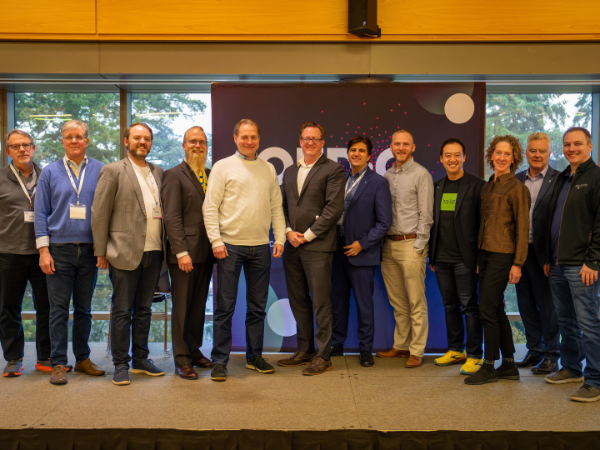

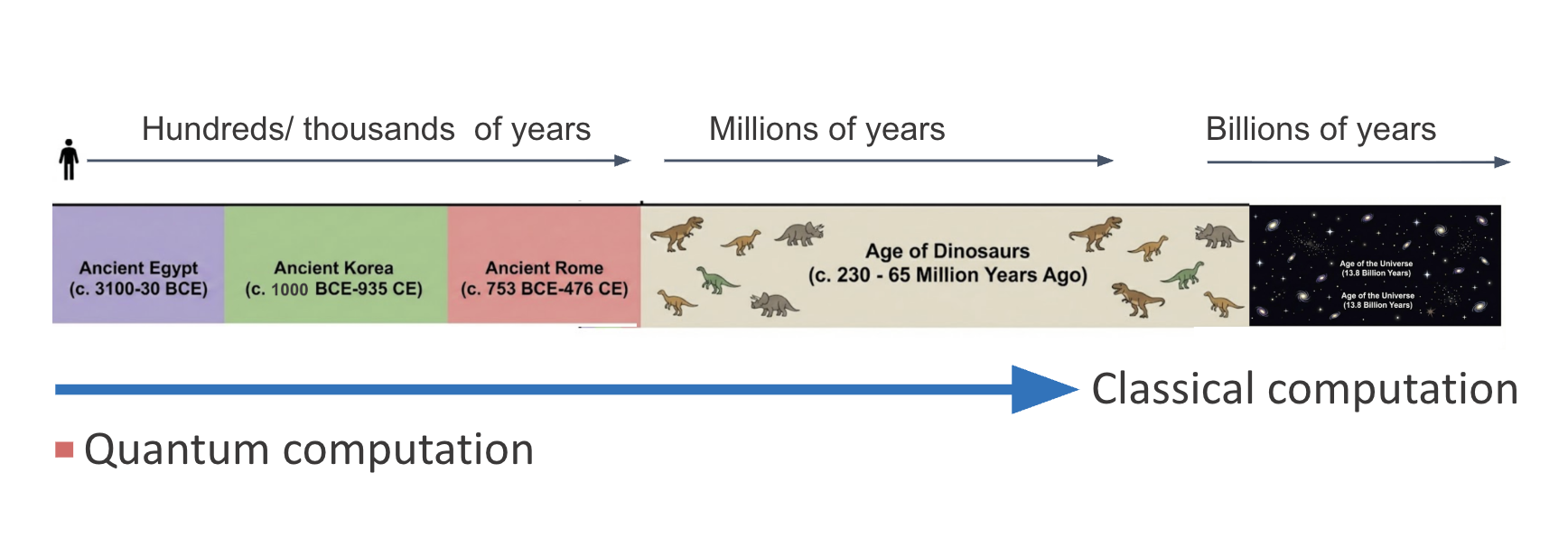



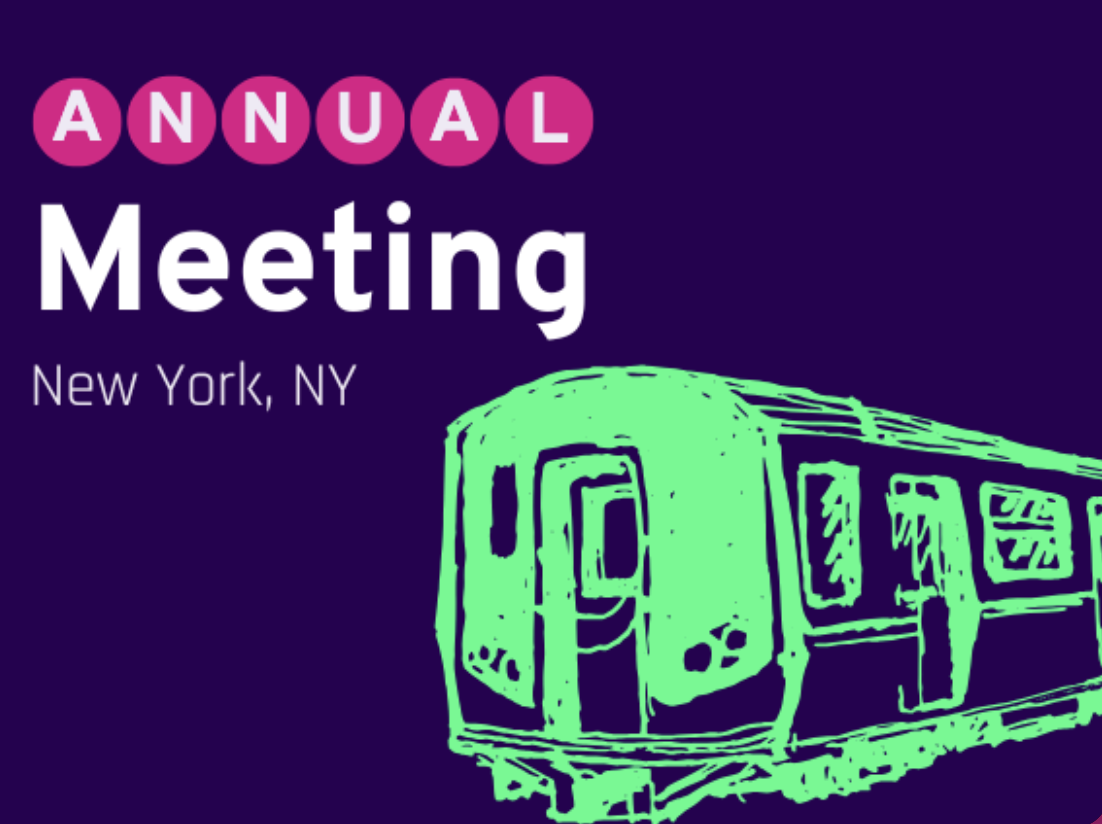






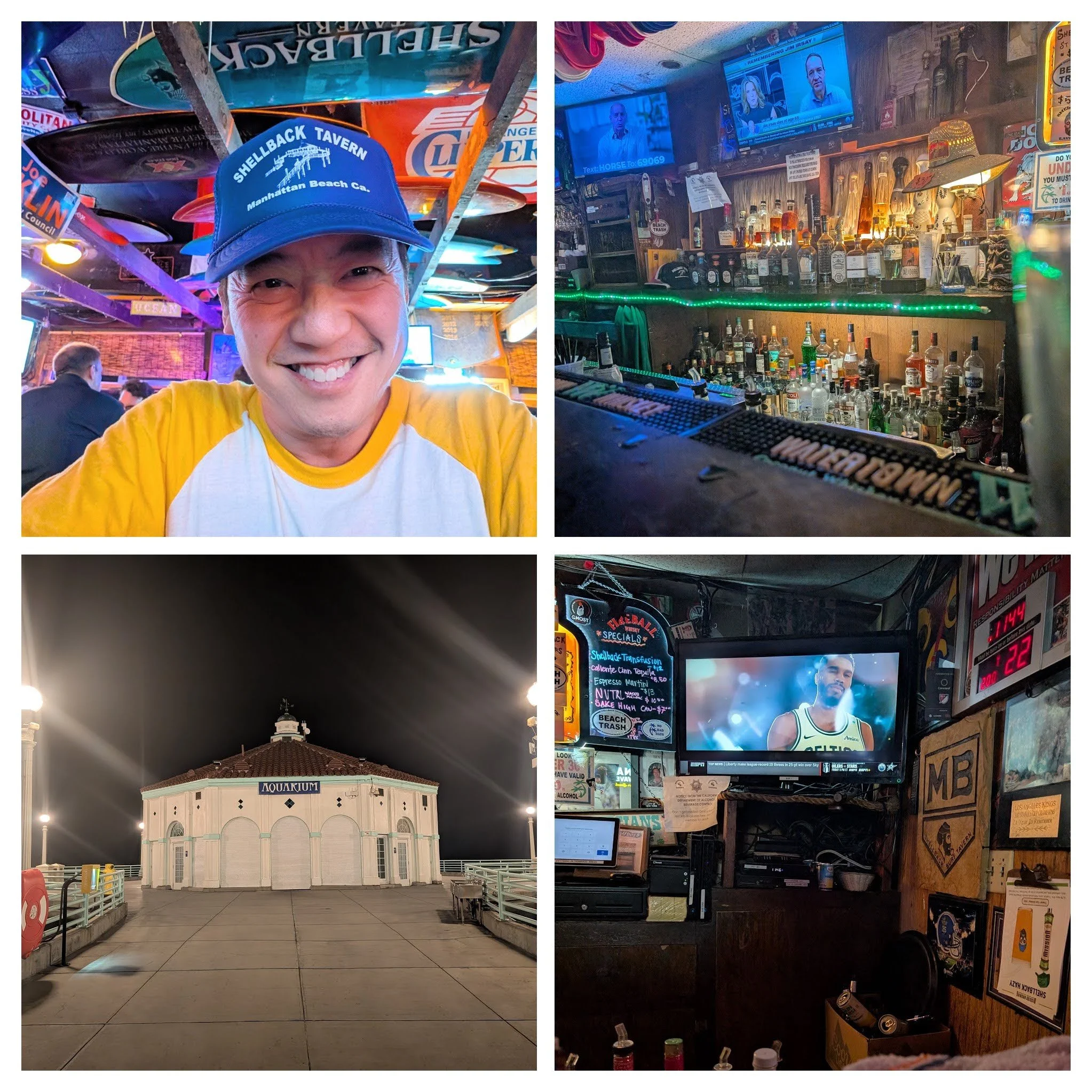

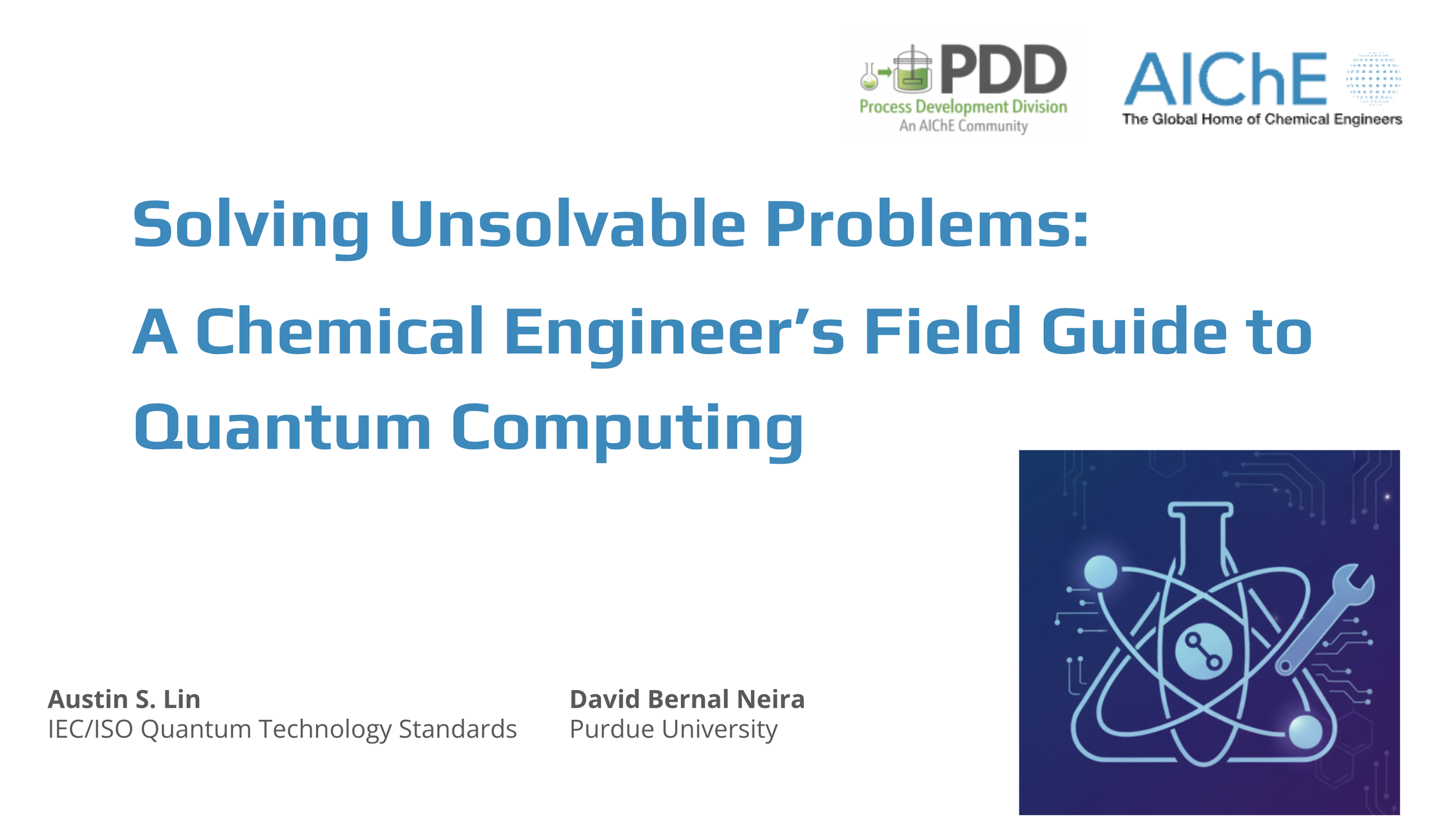
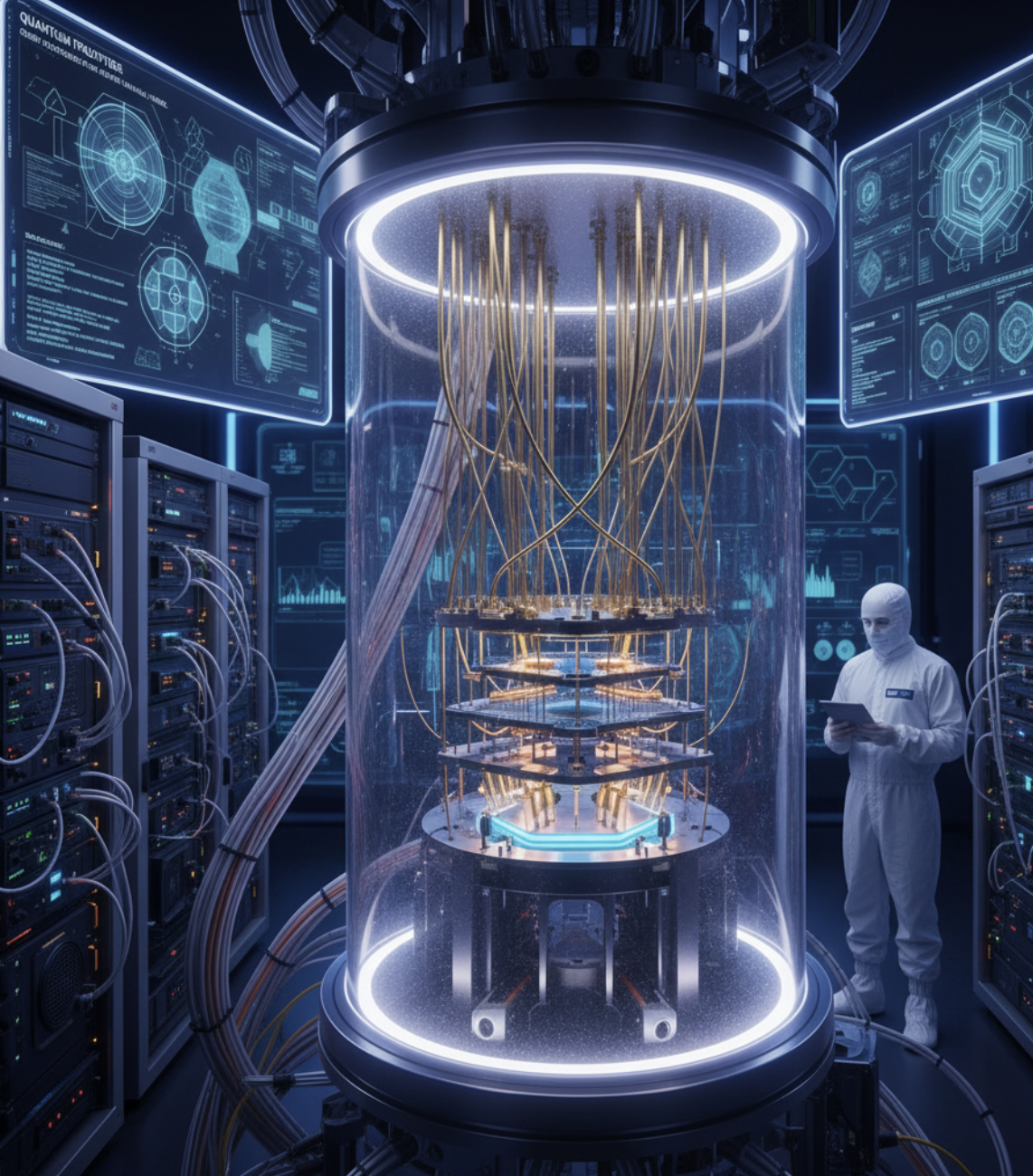



















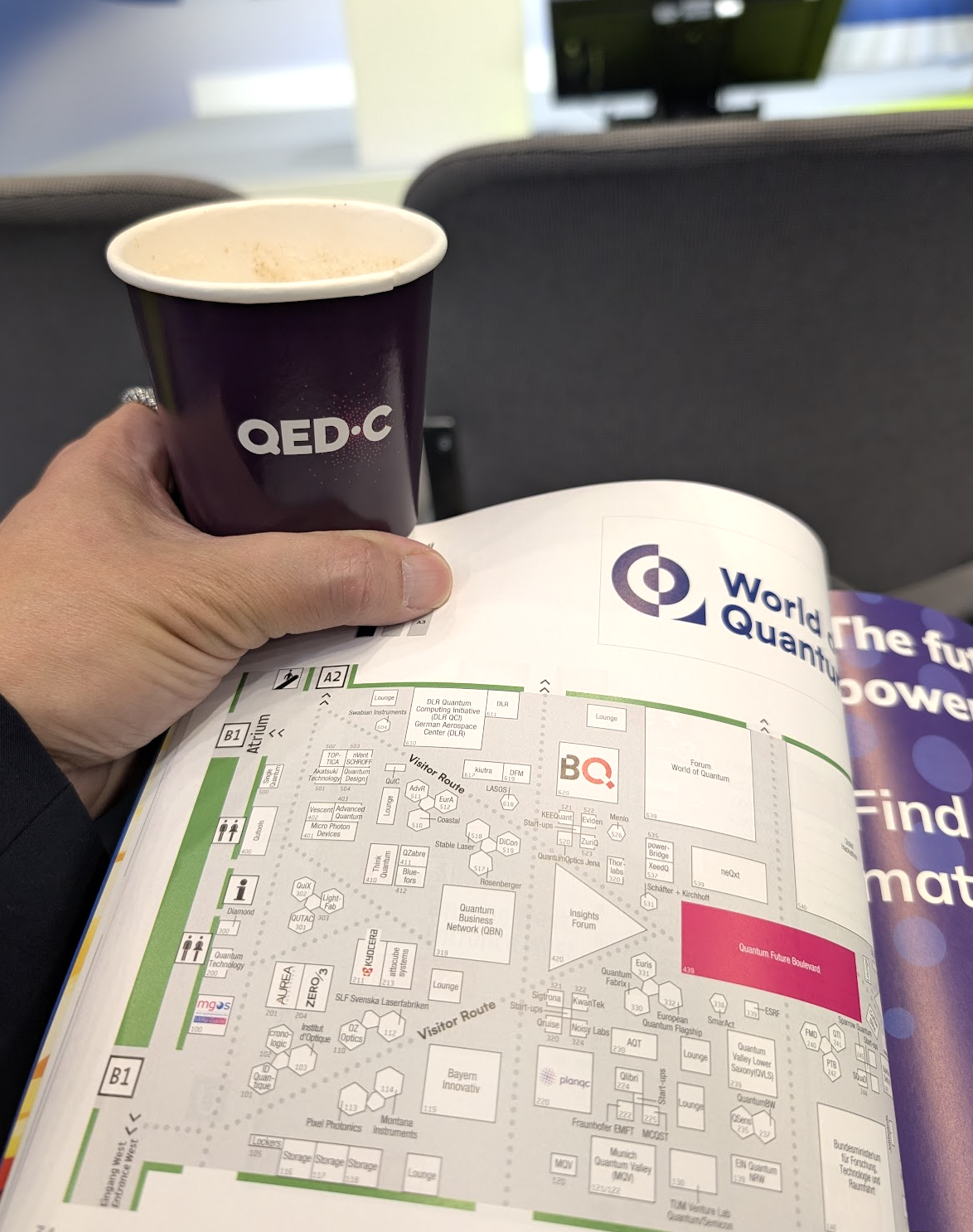
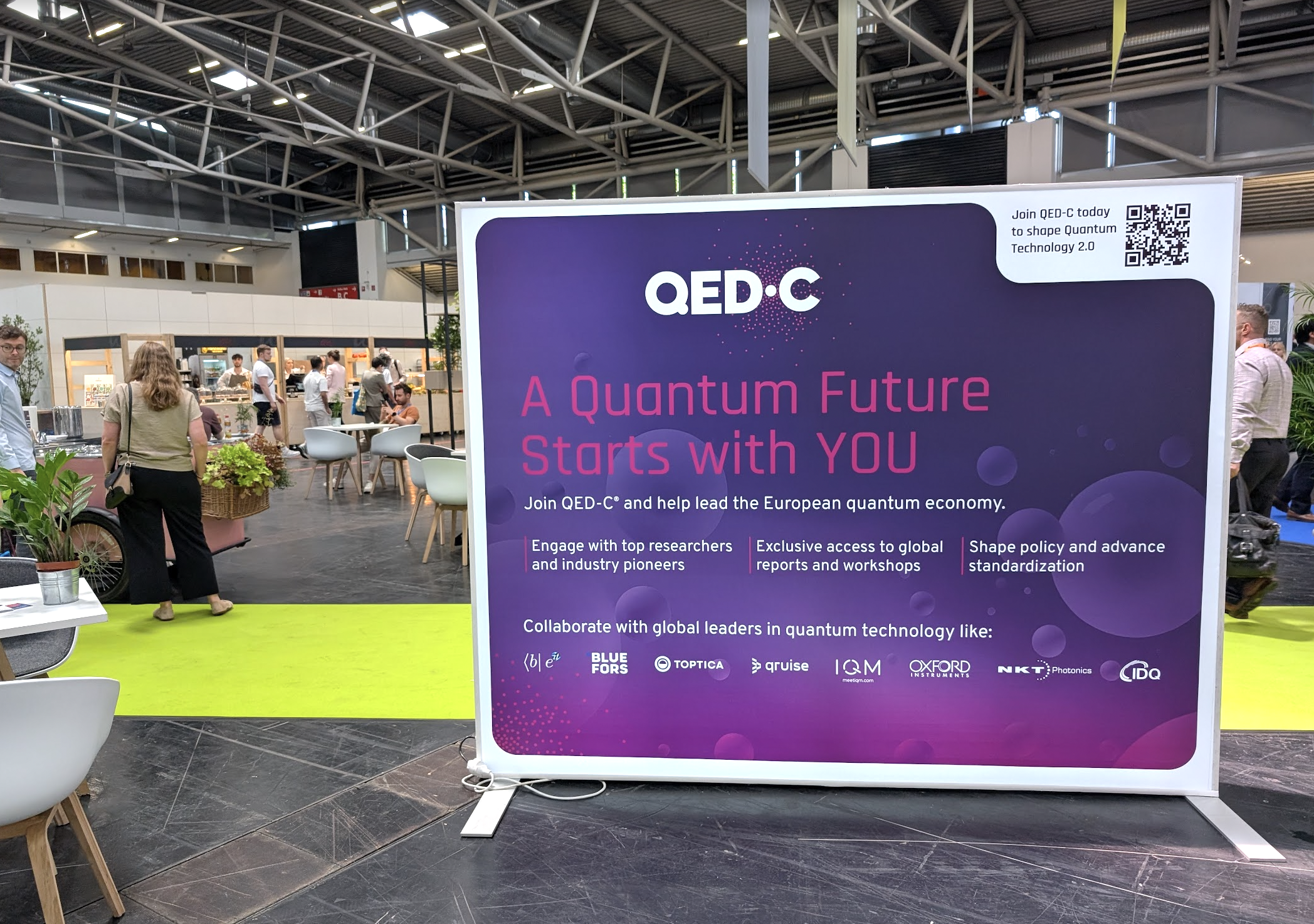

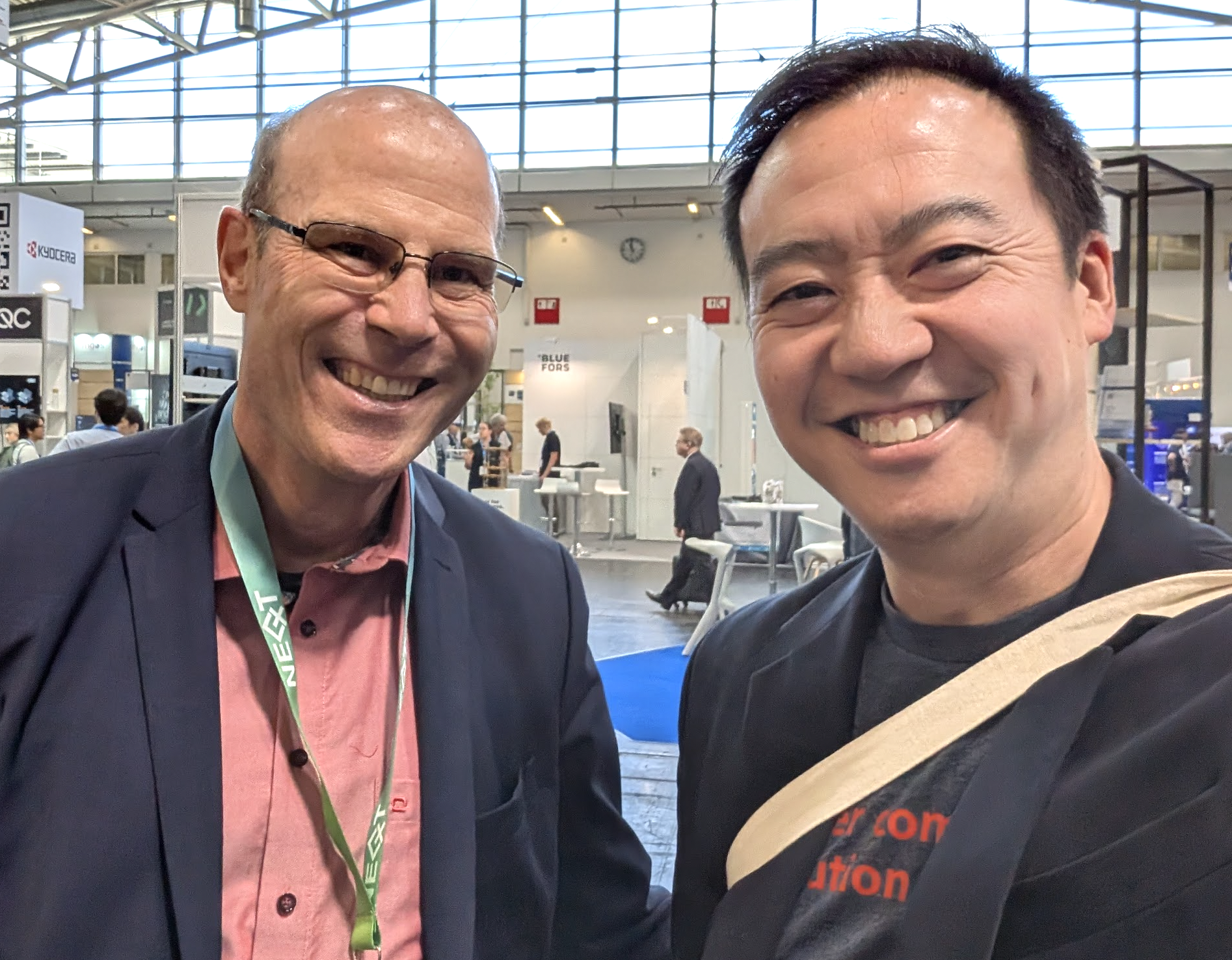


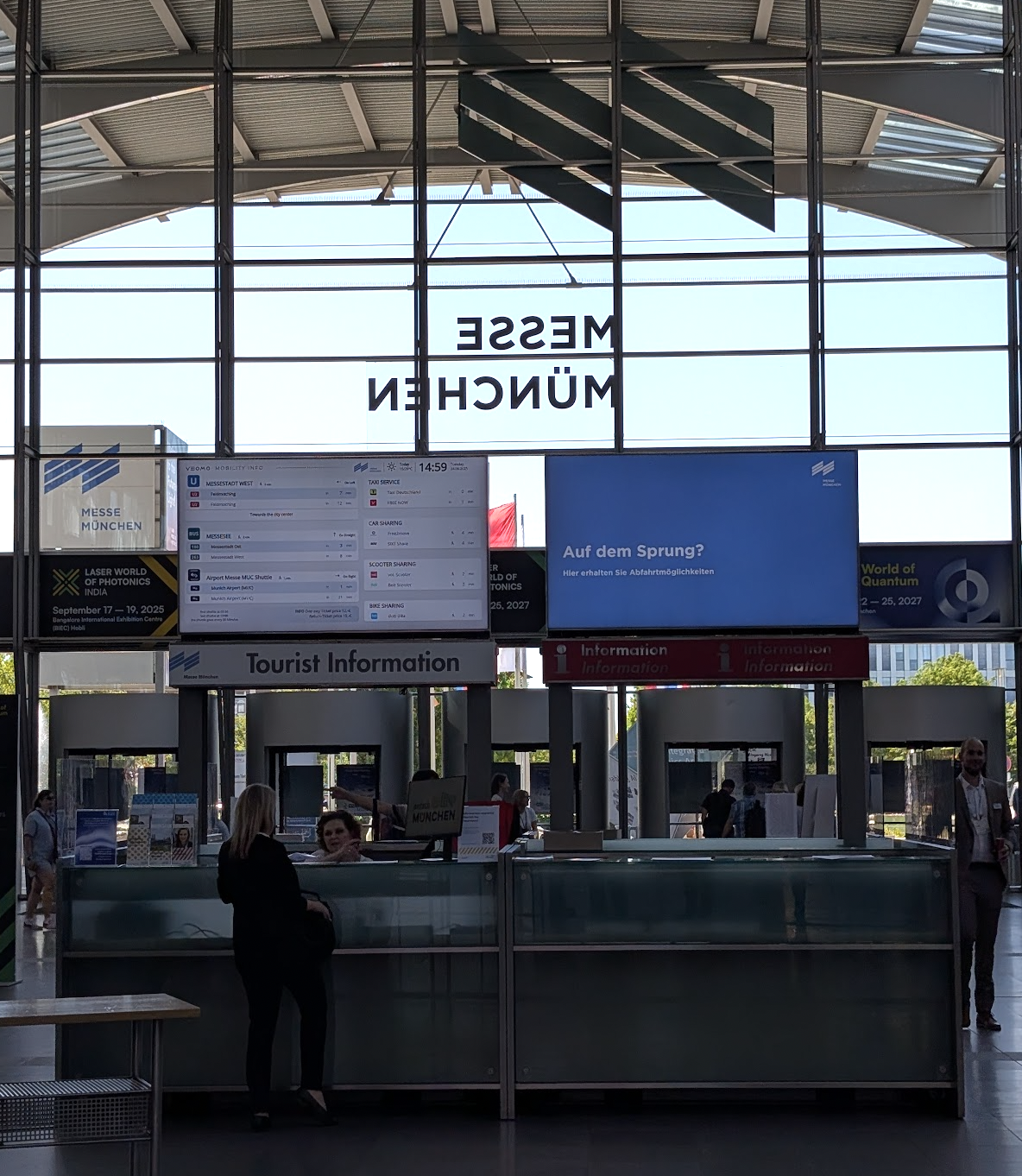





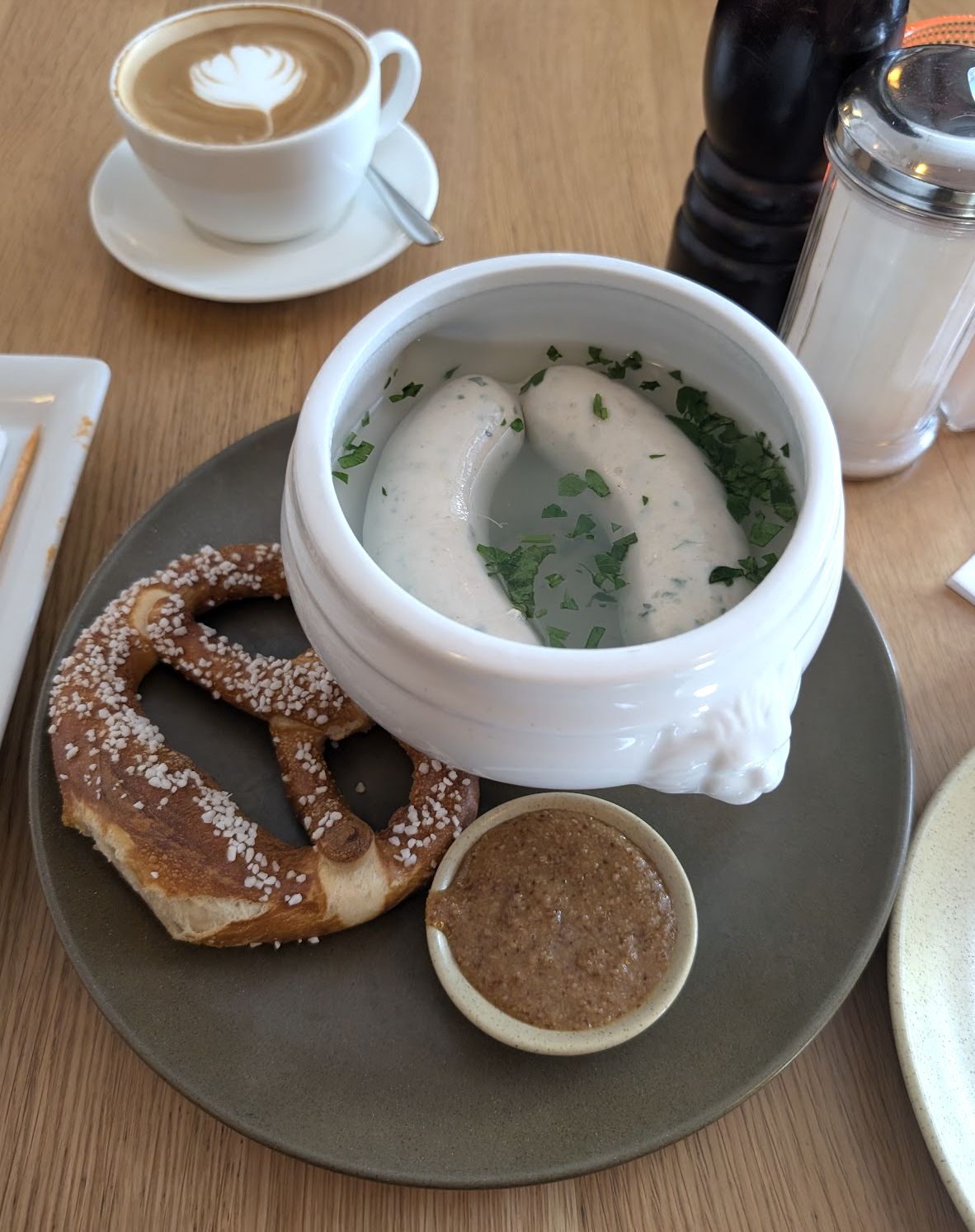

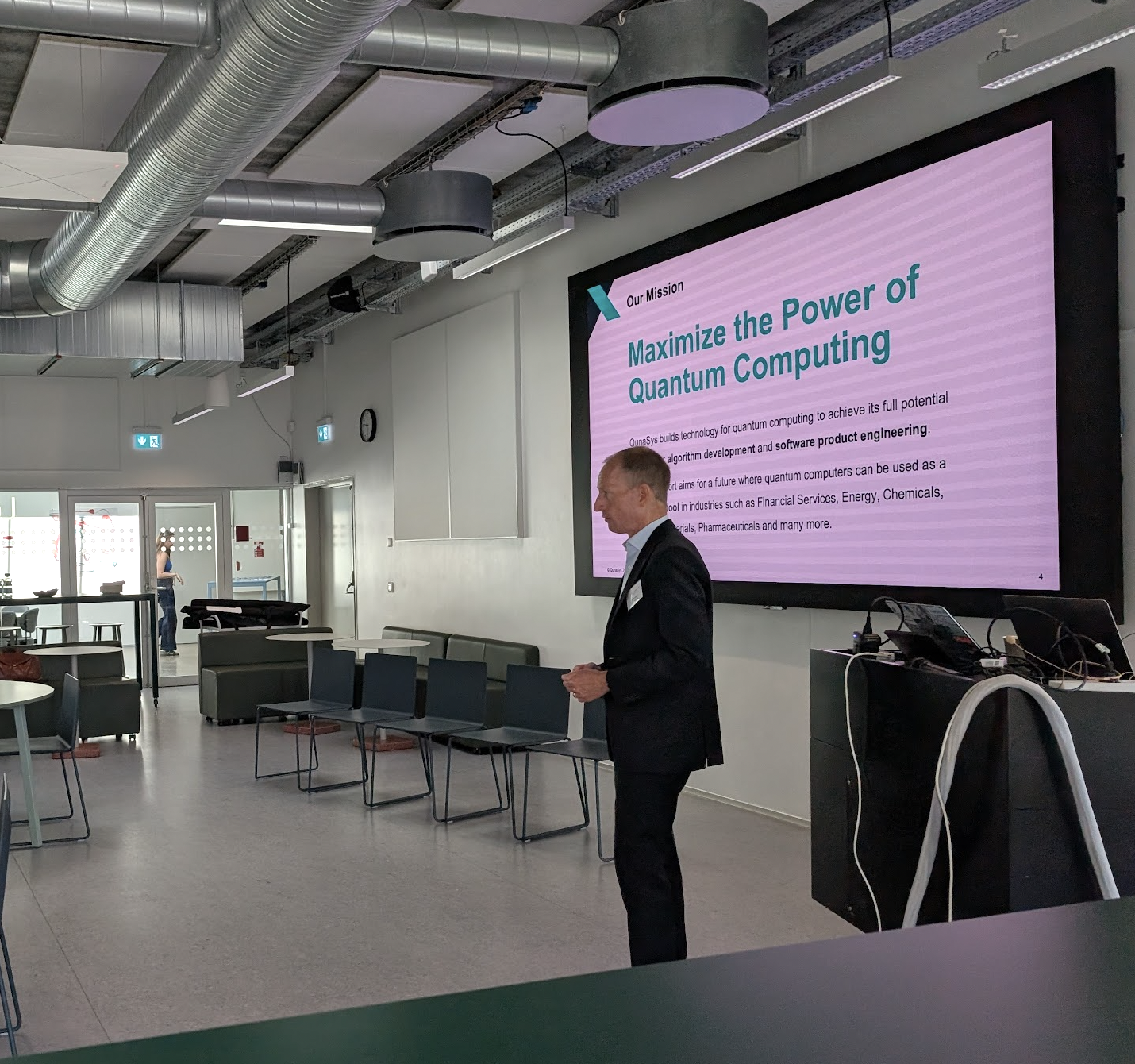








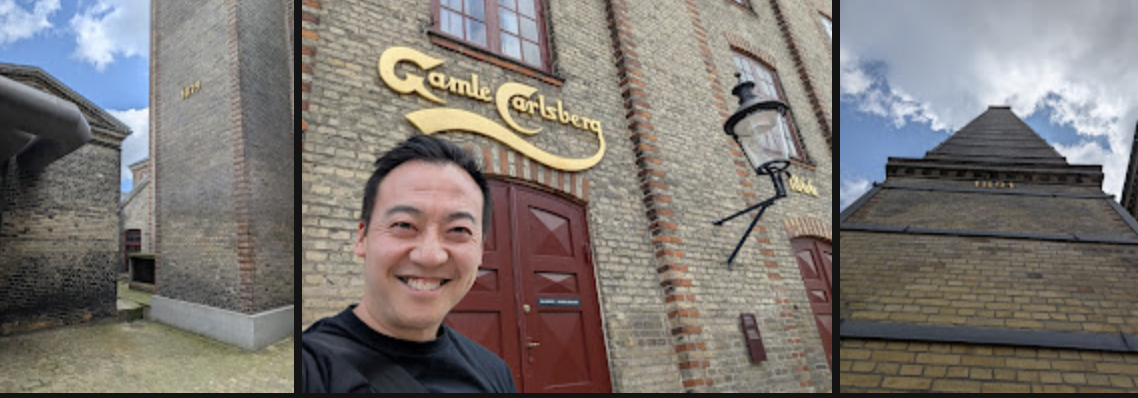

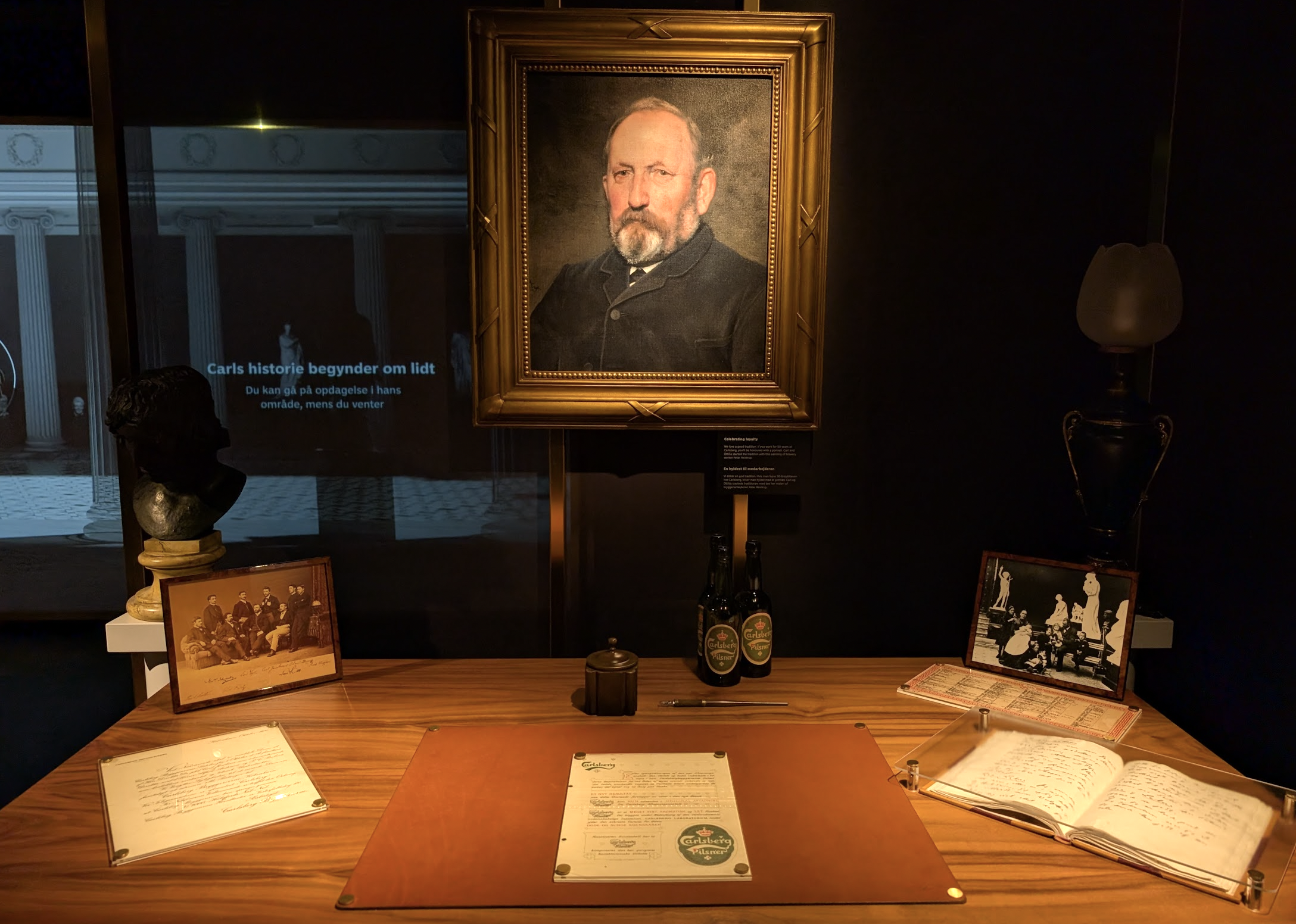


































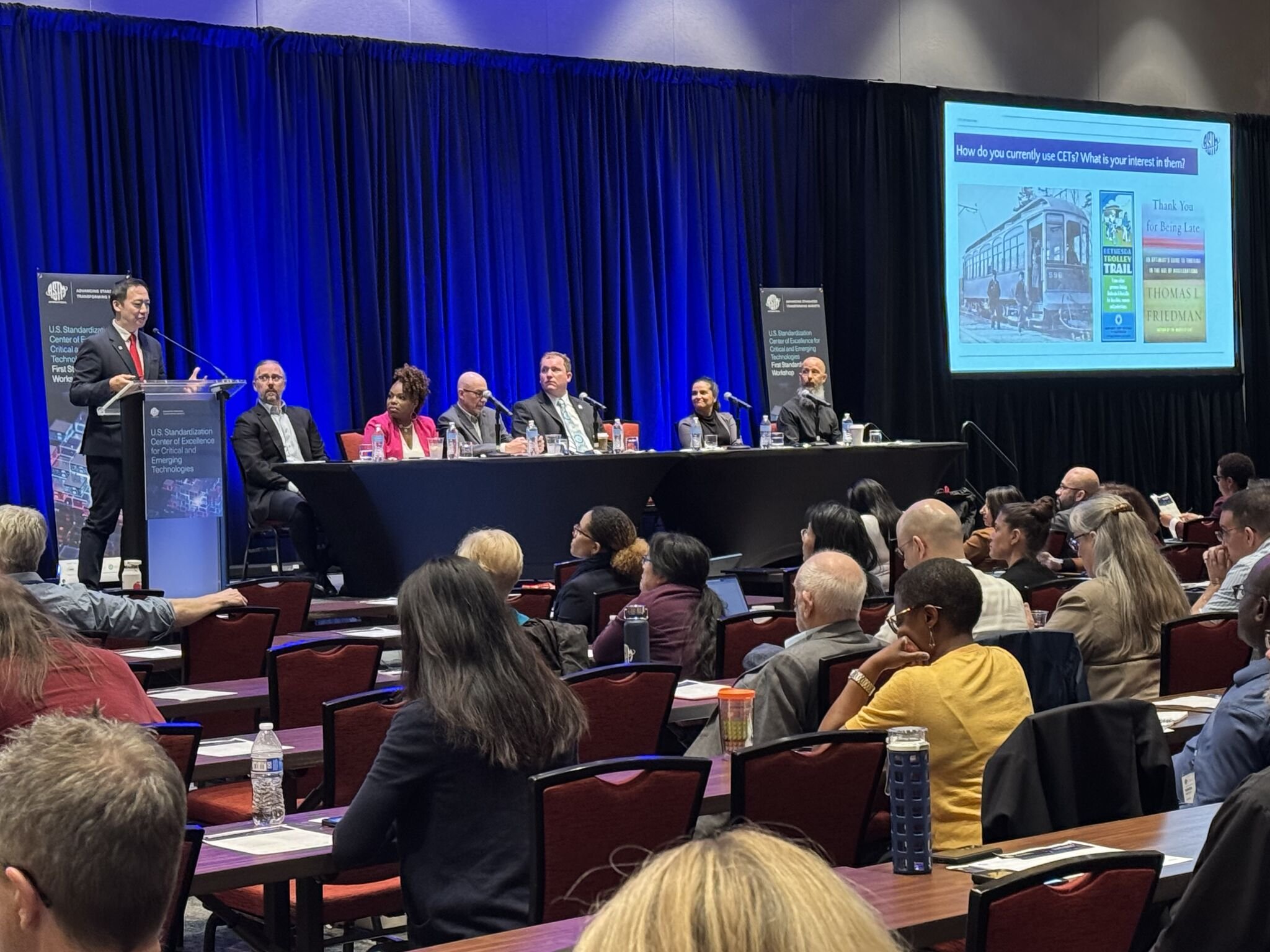

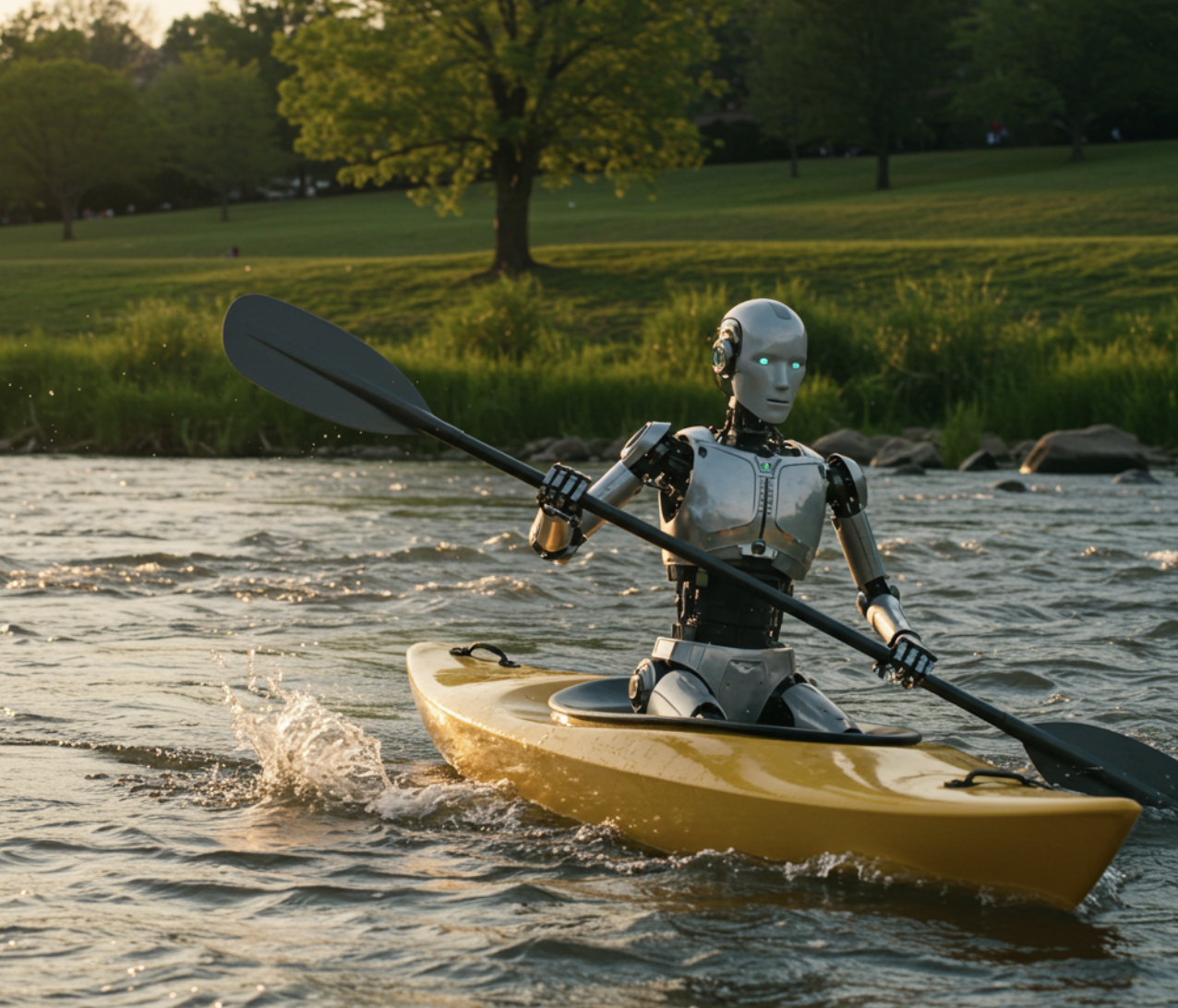








![Instagram image from user [at]mattiasink, an illustration of a quantum processor inspired by majorana1](https://images.squarespace-cdn.com/content/v1/55a9ab20e4b0f765fc45ff75/c92aa0c6-1a5f-48fb-8d51-eac0a700441e/fghs02993.png)







![Bronze bust of George Moscone. An excerpt reads, "San Francisco's [people] have learned how to...work with each other for the future of their community."](https://images.squarespace-cdn.com/content/v1/55a9ab20e4b0f765fc45ff75/be2365a6-a667-4644-bfc6-09dd830e7f12/mosconeew-3591.png)





